Your first steps while walking through the city should lead to the Aš Museum. Inspired by a tour and packed with information, he can set out to discover attractions and sights, of which there are many.
Tower Háj near city Aš
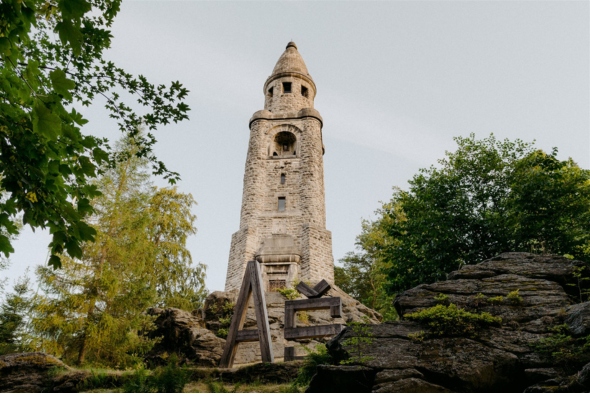
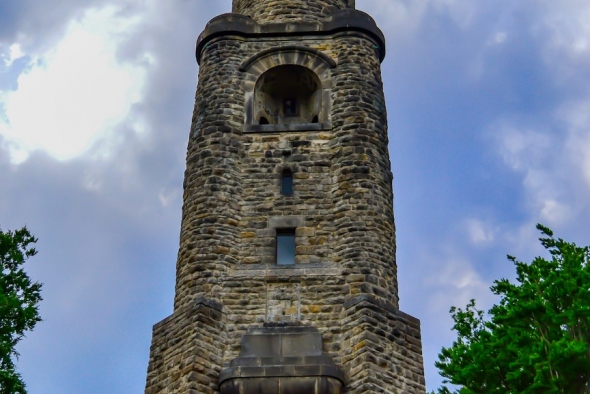
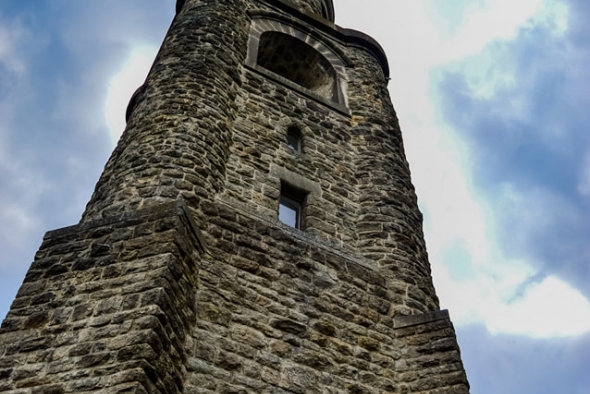
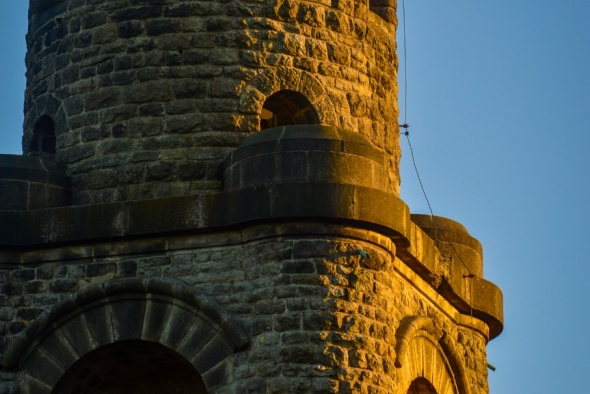
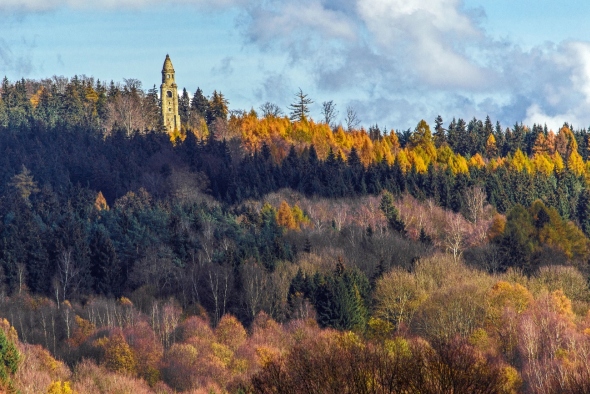
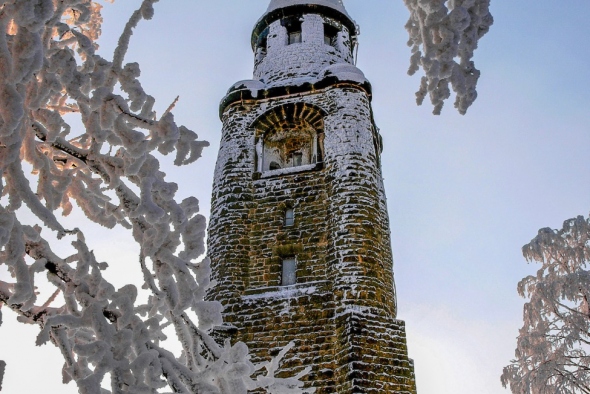
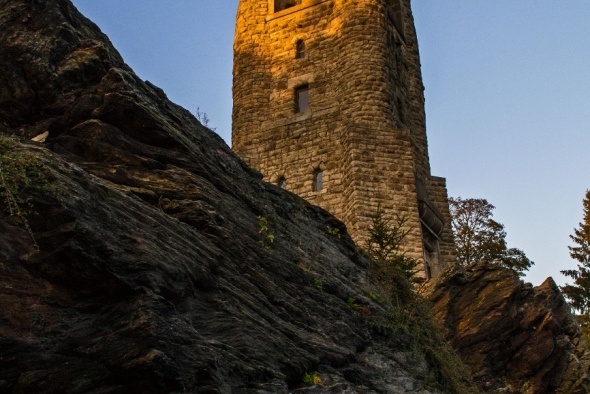
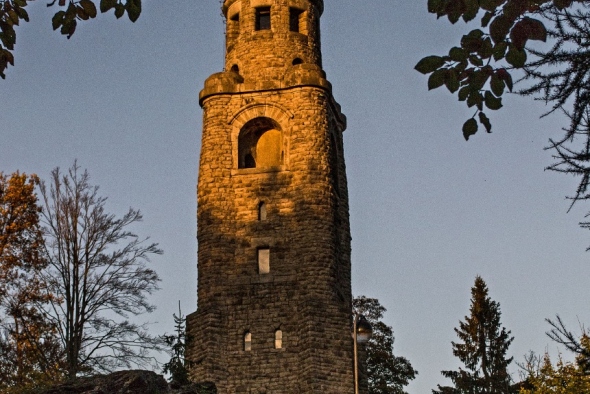
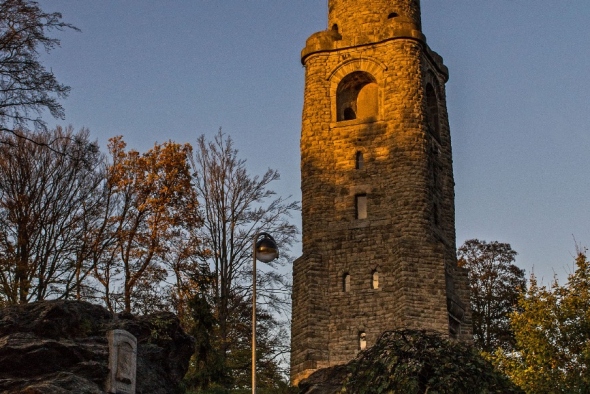
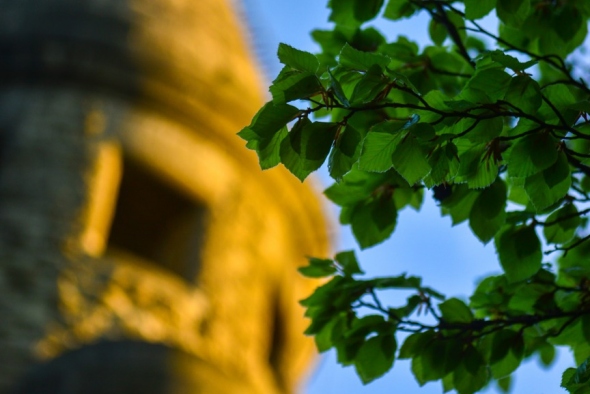
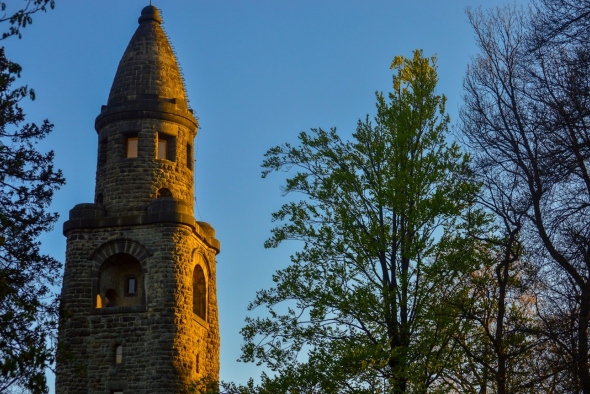
Traffic:
On foot, bike, car, public transport
Distance from IC:
1,9 km
Opening hours:
1.4.-31.10.daily, Mon-Sun: 9:00-17:00, summer months to 19:00
Step into the world of heights and adventure at the Háj lookout tower, where a magical view of the landscape unfolds before you. From this beautiful height, 34 meters above the peak of Háj at an altitude of 758 meters, a panorama that will captivate you awaits.
Utilize the copper plates placed in the eight highest windows of the tower to identify distant treasures. Within arm's reach, you'll find the Green Mountain near Cheb, 20 kilometers away, the Špičák in the Bohemian Forest, and the Ore Mountains with the majestic Klínovec, visible even from a great distance. Your attention will also be drawn to nearby hills, such as Wartberg and Kornberg, and even the highest mountain in the Saxon part of the Ore Mountains, Fichtelberg.
This historical tower was constructed in a record time of 13 months and opened in 1904. Its architect was Wilhelm Kreis from Dresden. The construction used 66 cubic meters of granite blocks, approximately 65,000 bricks, and nearly 60 wagons of limestone. The tower's monumentality literally rose from the ground.
In the tower's highest floor, which you can access after climbing 122 stairs, you can enjoy the surrounding landscape through eight glazed windows. The copper plates on the windowsills will be your guide, showing you the directions and distances to the surrounding mountains and towns.
On the north side, you will be greeted by Saxon towns like Bad Elster and Adorf, Schöneck, and a part of Hranice. When you look to the northeast, a view of the peaks of the Ore Mountains and the highest mountain in the Czech part, Klínovec, will open up. To the southeast, a panorama of the Slavkovský Forest with the summit Lesný and the impressive Dyleň awaits you.
As you gaze to the south, you'll spot Bavarian towns like Hohenberg an der Eger, Arzberg, and Marktredwitz. In the southwest lies the charming town of Schönwald, and looking to the southwest and west will reveal the town of Aš, the westernmost town in the Czech Republic, and the Bavarian town of Rehau.
Come and immerse yourself in this amazing adventure at the Háj lookout tower, where an unparalleled view of the enchanting region between the Czech Republic and Germany unfolds before your eyes!











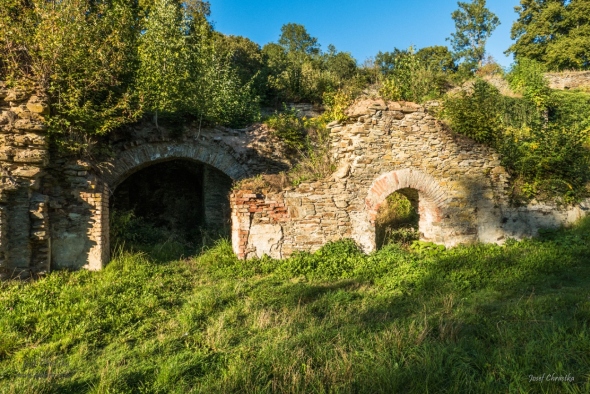
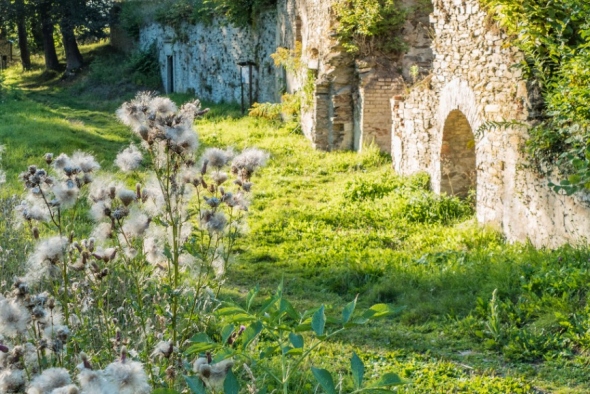
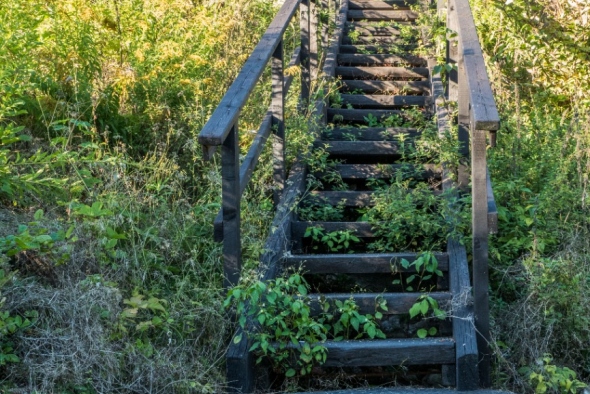
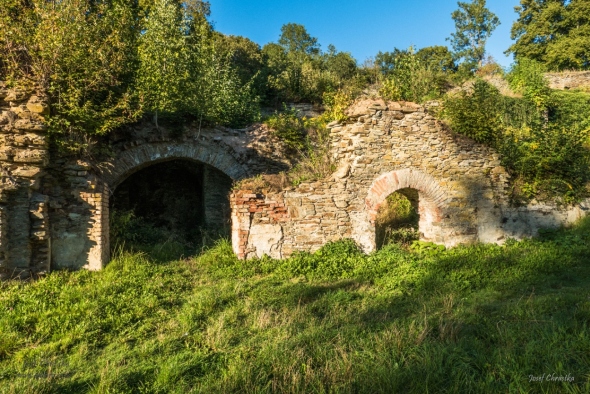
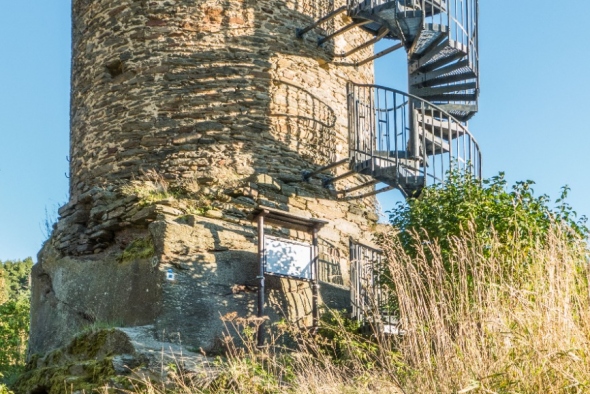
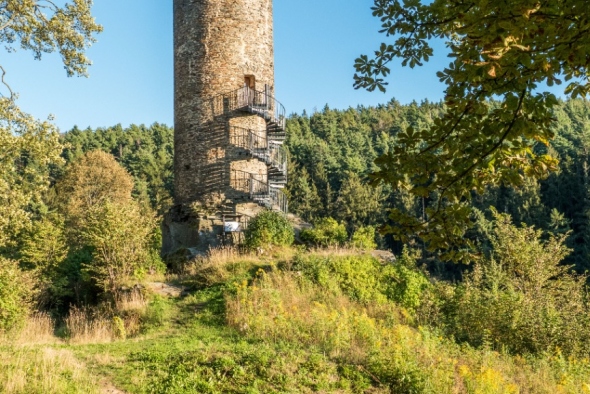
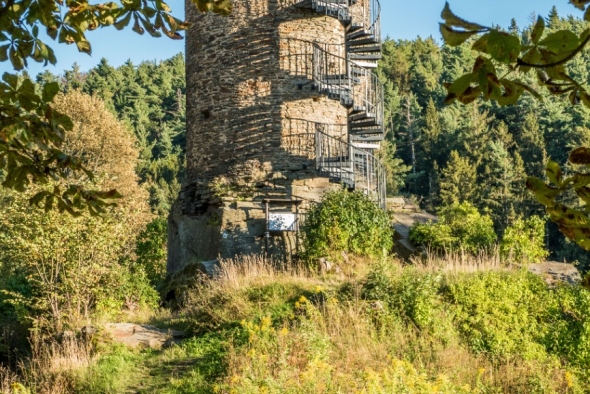
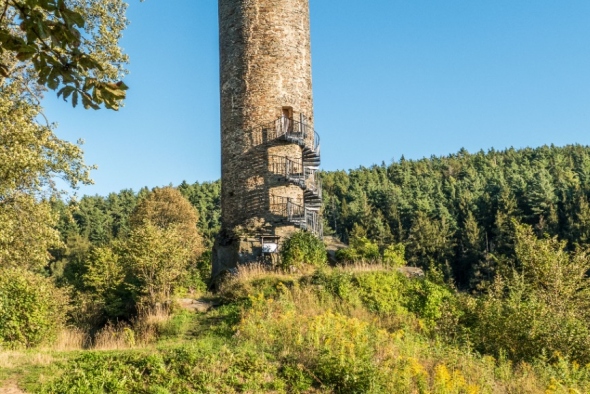
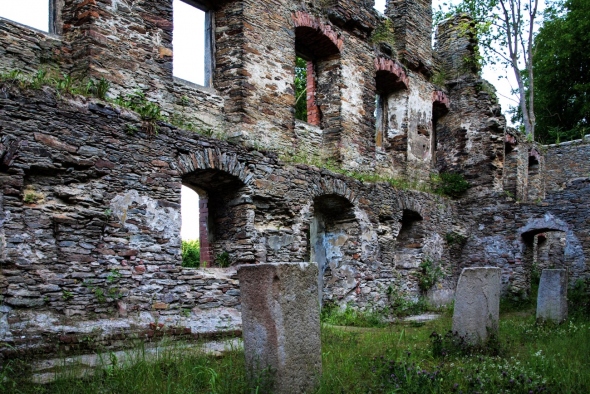
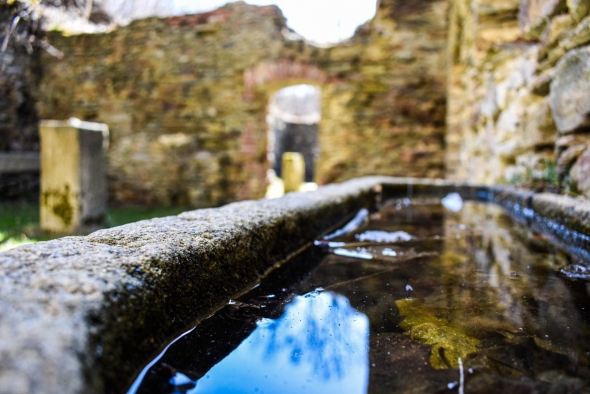
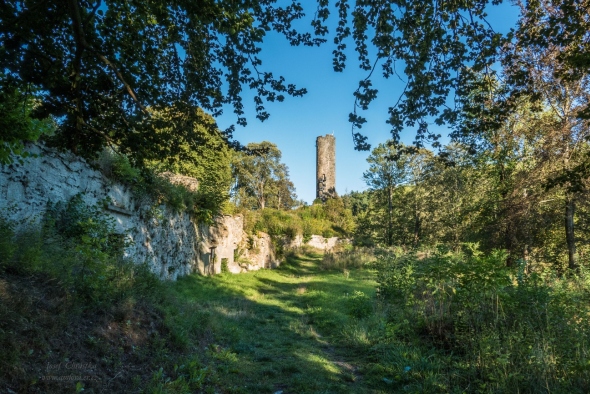
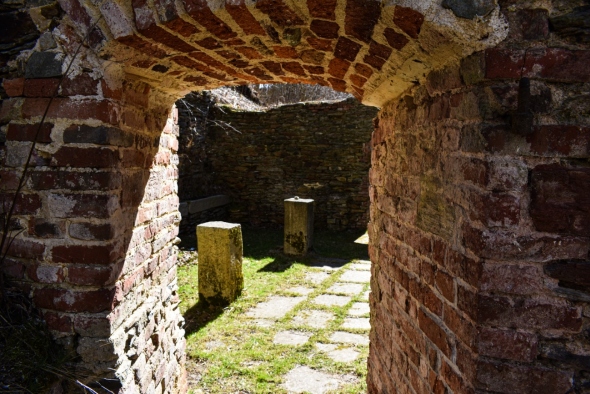
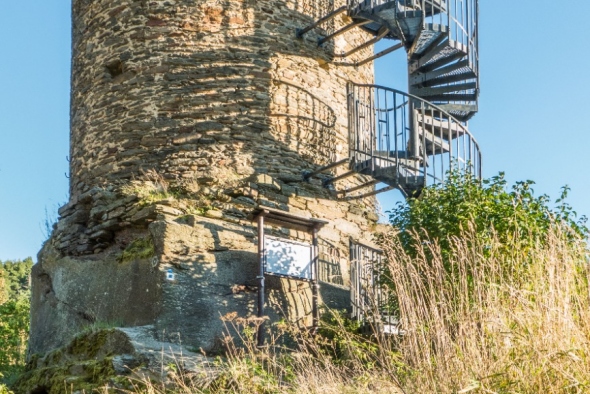
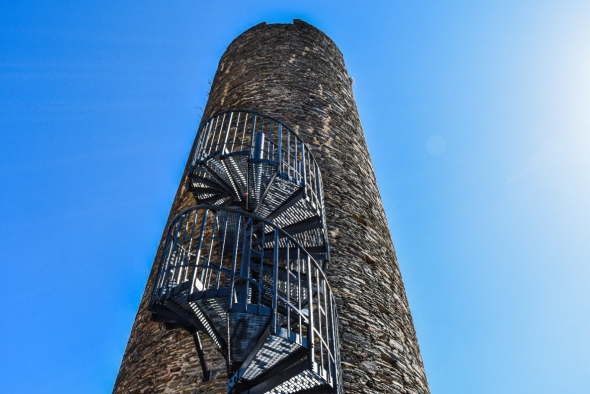
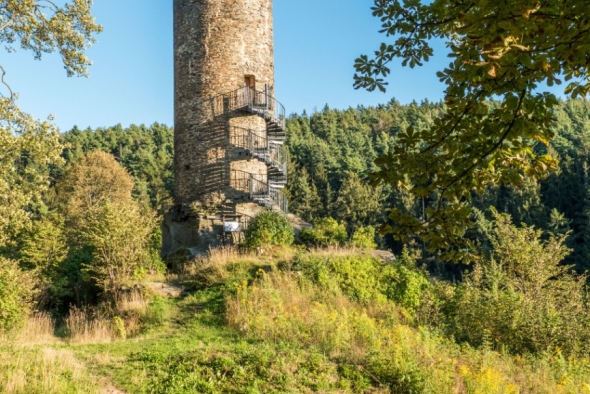
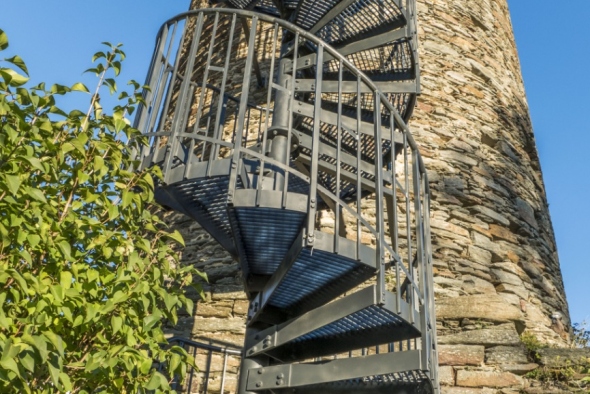
The ruins of the Neuberg castle in Podhradí
















Traffic:
On foot, bike, car, bus
Distance from IC:
5,9 km
Opening hours:
No (tower after borrowing keys at the municipal office)
Welcome to the ruins of Neuberg Castle, a mysterious place founded by the noble Neuberg family probably in the early 13th century. This place, although now in ruins, conceals a rich history and captivating stories.
Even though the first written mention of the castle dates back to 1288, its history is full of adventures and mysteries. The Lords of Plaven acquired the castle from Emperor Rudolf of Habsburg but soon returned it to the Neubergs, marking the beginning of a long-standing relationship with the Zedtwitz family.
Neuberg Castle faced many challenges throughout its existence. It was significantly damaged by the armies of King Charles IV, who exploited its strategic location on the trade routes to Saxony for raids. However, in 1395, the castle became the property of the Zedtwitz family when Conrad of Zedtwitz married Hedwig of Neuberg.
Since then, the Ašsko region began to undergo changes. Religion, especially Lutheranism, gained influence. In close proximity to the castle, the Church of the Good Shepherd was built in the 15th century, adding further historical value to this place.
In 1610, Neuberg Castle burned down and ceased to serve as the residence of the Zedtwitz family. Today, all that remains are ruins with an impressive tower standing on a 29.5-meter-high hill, and the remnants of the surrounding castle. The tower has a height of 22 meters, and the circumference of the tower measures 19.2 meters. Although Neuberg Castle is in ruins, it still offers a fascinating glimpse into the past and invites you to discover its secrets and historical legacy.
Textile Museum in Aš
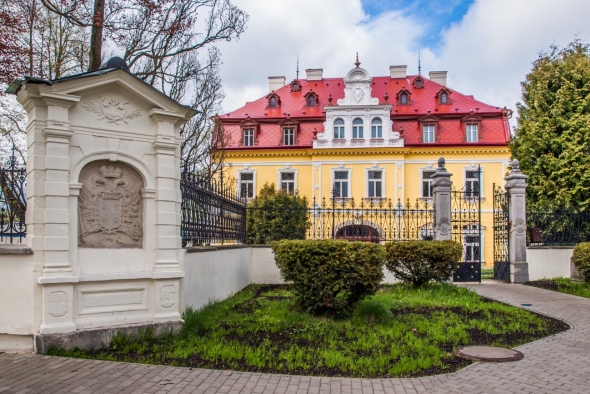
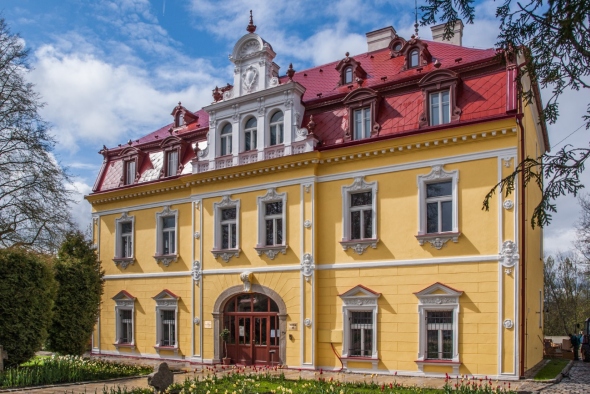
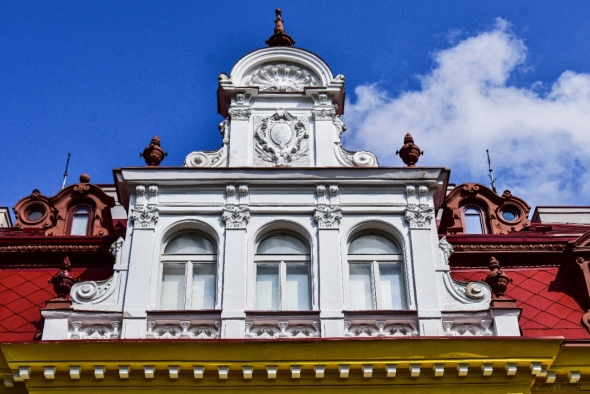
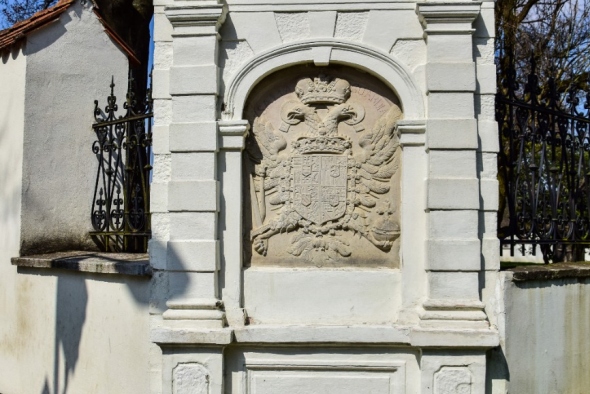
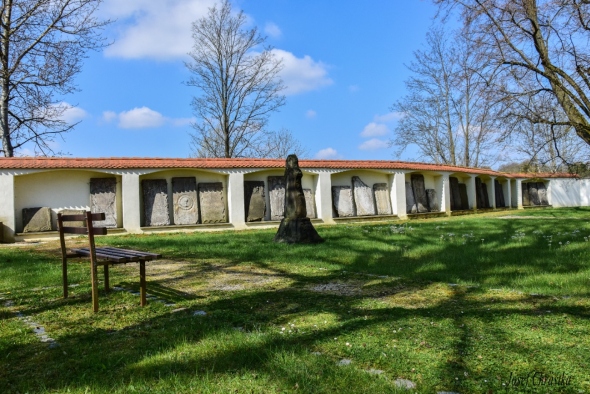
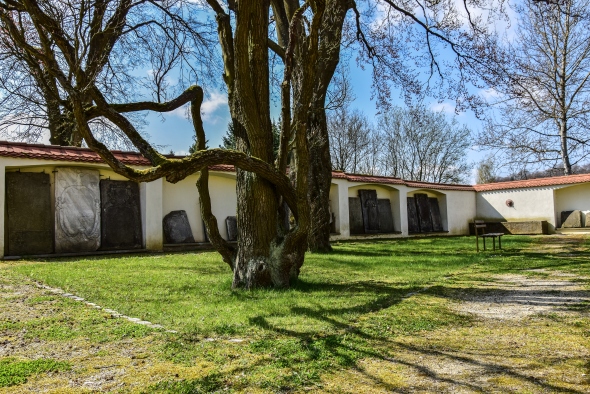
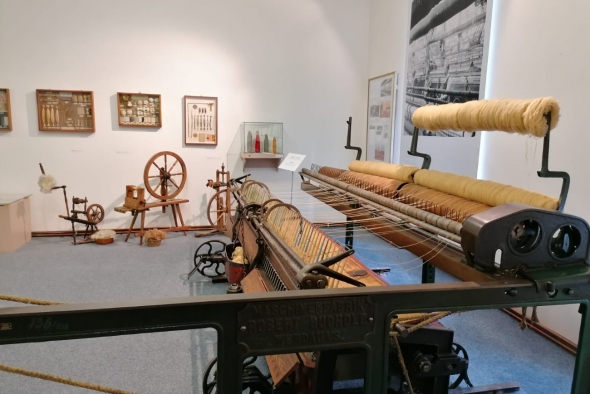
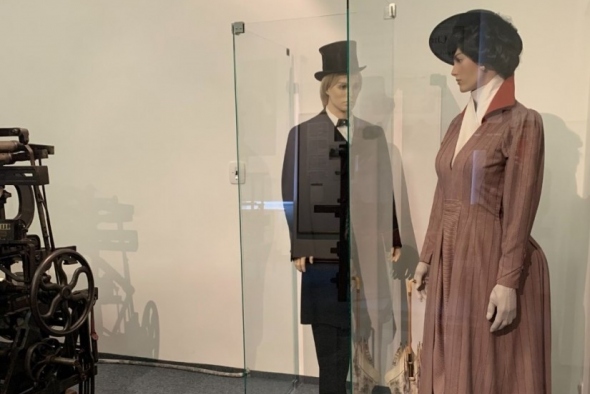
Traffic:
On foot, bike, car
Distance from IC:
304 m
Opening hours:
Mon closed Tue-Fri 9-12 13-17 Sat-Sun 10-17
Welcome to the heart of the Ascher Ländchen, where a fascinating insight into the radiant history of textile production and the important heritage of the region unfolds. Imagine how more than two centuries ago, textile production took its first steps here. In the 18th century, it began to flourish, and with the onset of the industrial revolution, it literally exploded. Even the harsh times after World War II couldn't quench its spirit. Many people might think that the departure of the German population spelled the end of the textile industry in this region, but that is far from the truth.
Factories were nationalized, new people arrived in the borderland, and production continued. This continued until the 1990s when new changes came after the events of 1989, and textile mills began to weaken.
Today, our museum is the sole reminder of the rich history of textile production in Ascher Ländchen. Since the 1970s, it has been collecting all possible documents related to textile production in the region. The museum strives to preserve everything related to the textile industry, from various machines, spinning and weaving looms to knitting frames and gloves. Of course, we must not forget the results of their work, such as beautiful lace, curtains, clothing, aprons, and much more, including gloves. The museum boasts one of the largest collections of textile gloves in Europe, with over 20,000 pieces. Furthermore, you can witness the entire glove production process right here.
However, our museum offers much more than just textile history. As you stroll through this fascinating space, you will also come across records of reconciliation crosses that remind us of important aspects of regional history and the determination to preserve the memory of those who endured difficult times. These crosses, also known as "Versöhnungskreuze," are symbols of reconciliation and hope, erected at sites where tragic events, often associated with war, occurred.
So, if you are planning a trip to Ascher Ländchen, be sure not to miss this fascinating museum. Here, you will not only become acquainted with the rich textile history of the region but also gain insight into the captivating traditions that continue to shape this area. Prepare for an adventurous journey through time and the unraveling of mysteries you will want to thoroughly explore.








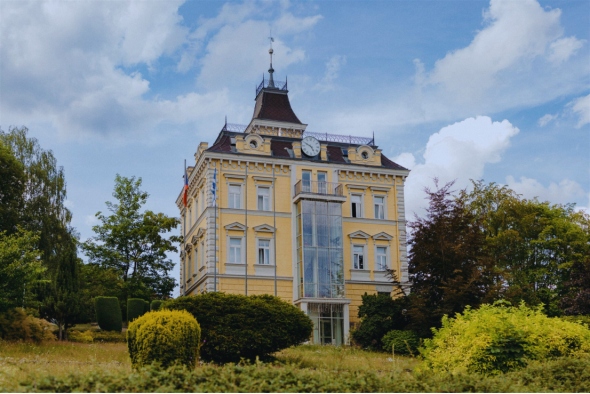
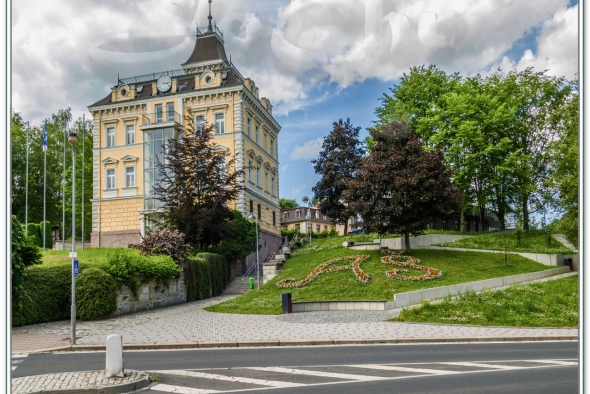
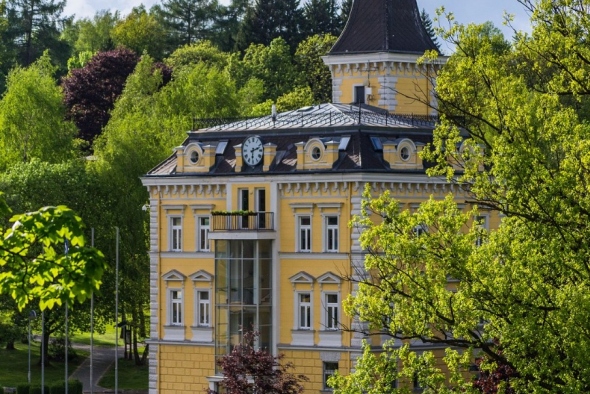
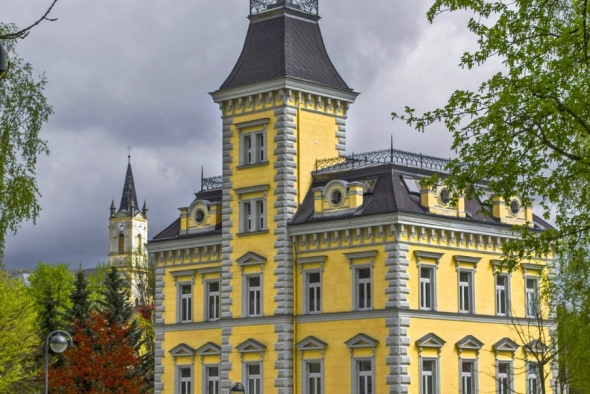
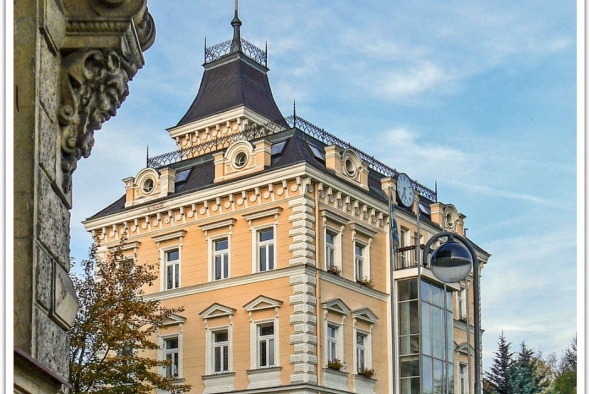
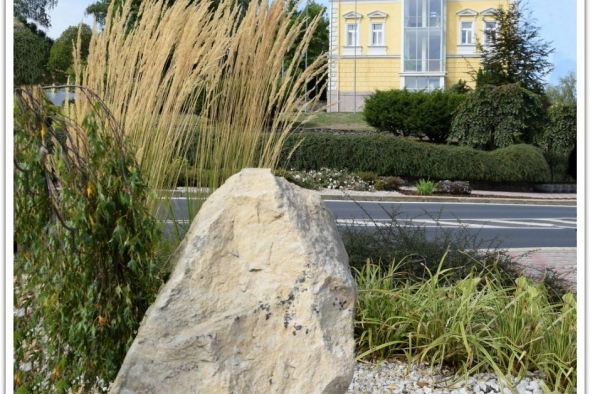
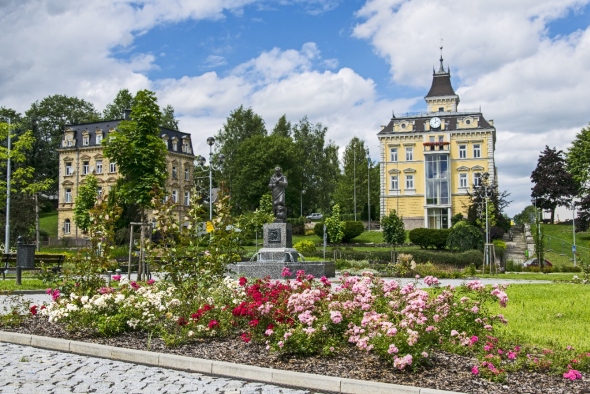
Town hall







Traffic:
On foot, bike, car
Distance from IC:
442 m
Opening hours:
No
Welcome to Aš! Allow us to introduce the iconic town hall to you. This beautiful building, which stands today as one of the gems of the city, has a rich history.
The town hall was established in 1733 as the administrative center of the Zedtwitz estate. Unfortunately, it fell victim to a devastating fire in 1814. However, in the spirit of restoration, it was rebuilt in 1815-1816 according to the original plans of Angelus Pleffer. This restoration brought back its baroque beauty.
Later, in 1885, the town hall underwent further changes. It gained a second floor and was transformed into a splendid example of pseudo-Renaissance architecture. This transformation added another layer of beauty to it.
After 1945, the building found a new purpose. It became home to a museum and later hosted the city library. It was a place where many treasures and knowledge were collected.
In 2003, the town hall underwent a comprehensive renovation and was returned to its original purpose. Today, you can explore its rich history, admire its architectural beauty, and immerse yourself in captivating stories preserved within.
So, if you are curious about historical adventures, do not hesitate to visit the surroundings of the town hall in Aš. It is a place that will enchant you with its history and beauty.
Goethe Square
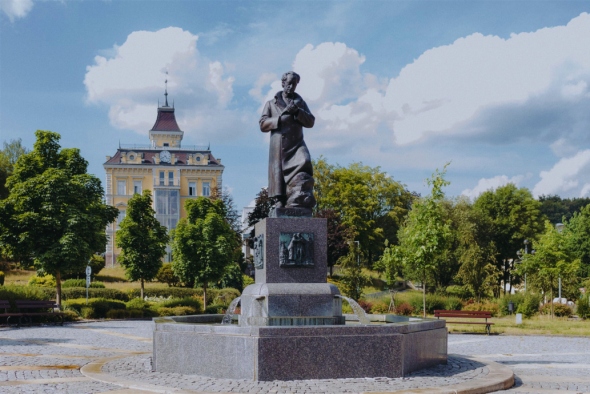
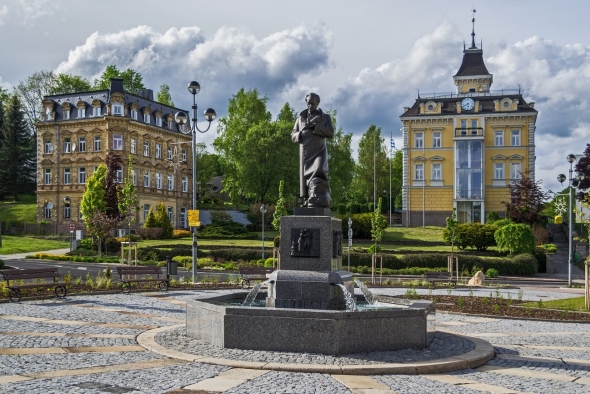
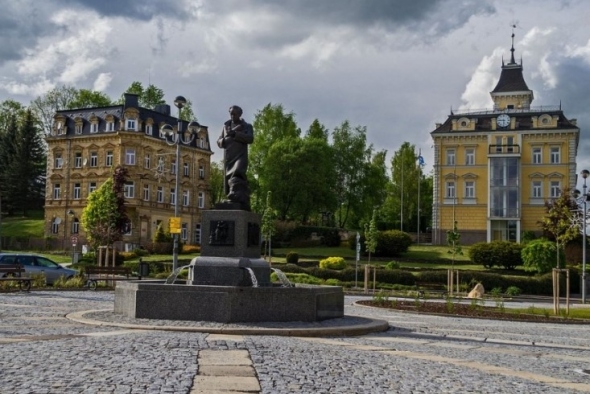
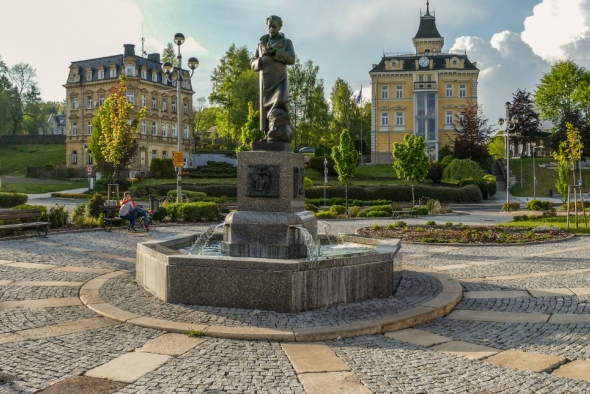
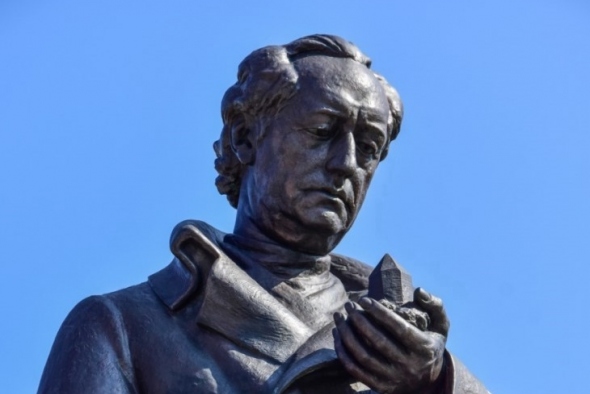
Traffic:
On foot, bike
Distance from IC:
348 m
Opening hours:
No
With a Guide to the Past – Would you like to travel back in time to the period when the famous poet Johann Wolfgang von Goethe often visited the town of Aš between 1806 and 1823? Right here, he experienced some unforgettable moments, and you can relive them thanks to our unique Time Trip application.
During your virtual stroll on the historical Goethe Square, you can take a look at the plaque on the building of the Pošta Hotel, where Goethe made several stops. In 1932, a monument with a fountain was unveiled in the heart of the square, designed by the sculptor J. Watzal. On the pedestal of the monument, you'll find reliefs depicting scenes from Goethe's works.
On the northern side of the monument, you'll find the years of Goethe's visits to Aš. This is the only representation of Goethe in the Czech Republic that shows him with a mineral in his hand. During your journey through time, you can also prepare for encounters with historical figures like Gustav Geipel, Konrad Henlein, and even a mythical character known as Huckauf.
Thanks to our mobile Time Trip application, you can experience these historical moments almost as if you were a real tourist in the past. So, what are you waiting for? Step into Goethe's world and his era and embark on an unforgettable adventure in Aš!





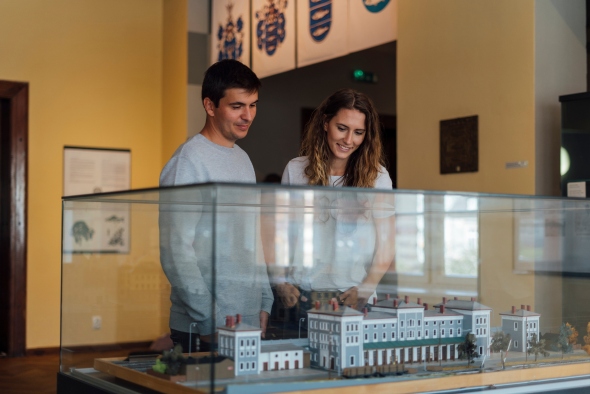
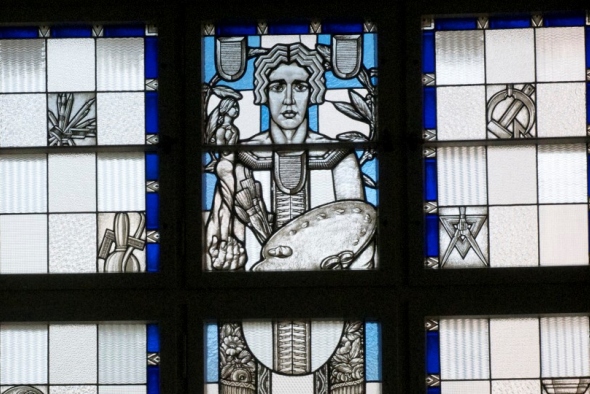
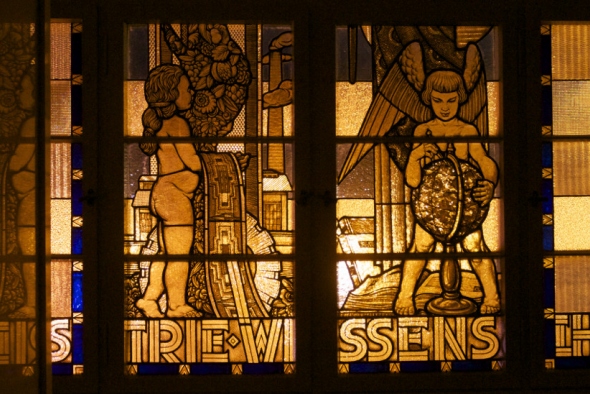
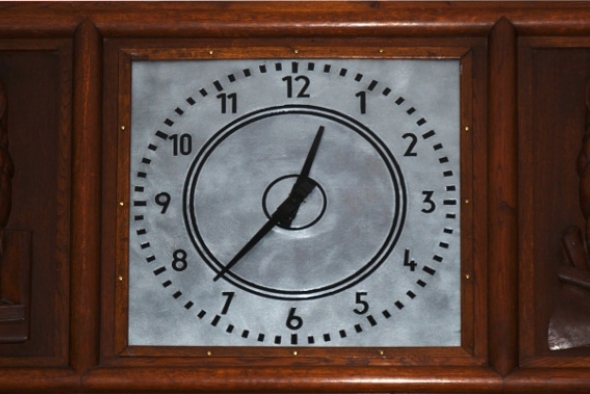
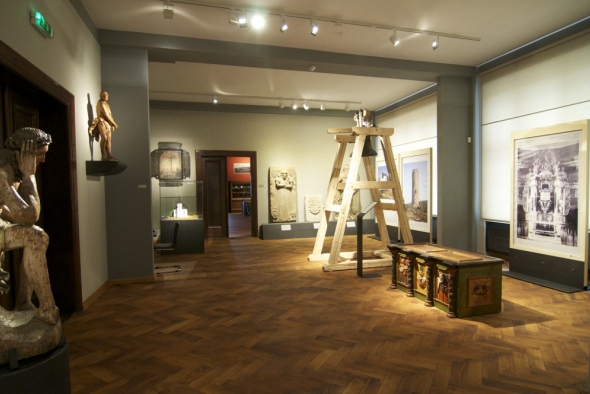
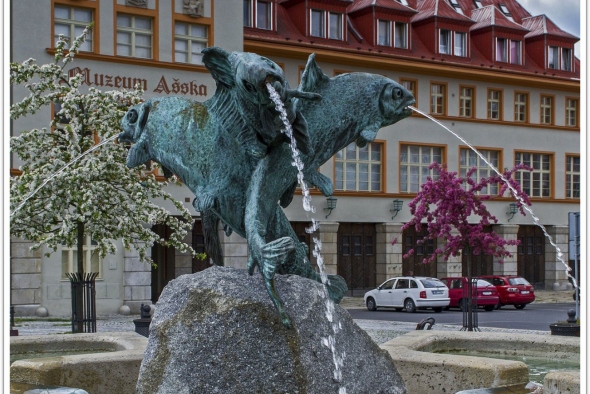
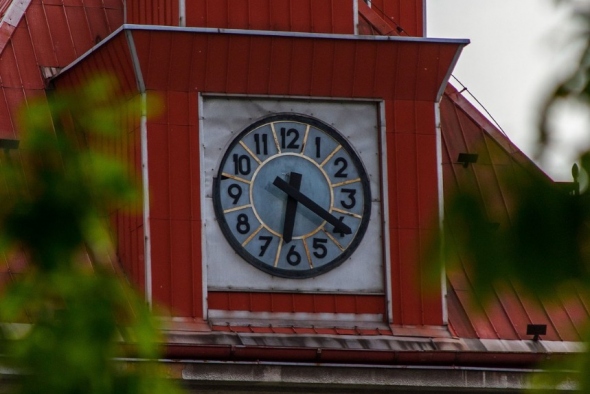
Ethnographic Museum







Traffic:
On foot, bike, car
Distance from IC:
302 m
Opening hours:
Mon closed Tue-Fri 9-12 13-17 Sat-Sun 10-17
Welcome to the Aš Museum, where you can explore the fascinating stories of the town and its surroundings! The museum is located in a historically protected building known as the "firehouse" on the Post Square, which has been sensitively reconstructed and now serves as a home for the ethnographic collection.
Here, you will learn why the town is named as it is and what the three linden trees in the town's emblem represent. Our exhibition will also bring you closer to the history of the former owners of the Aš-Neuberg estate, such as the Lords of Neuberg and Zedtwitz. You will have the opportunity to delve into the past and understand the religious circumstances in this region.
Come and discover captivating stories and the history of Aš and its surroundings in our captivating museum!
Evangelical Church of the Good Shepherd
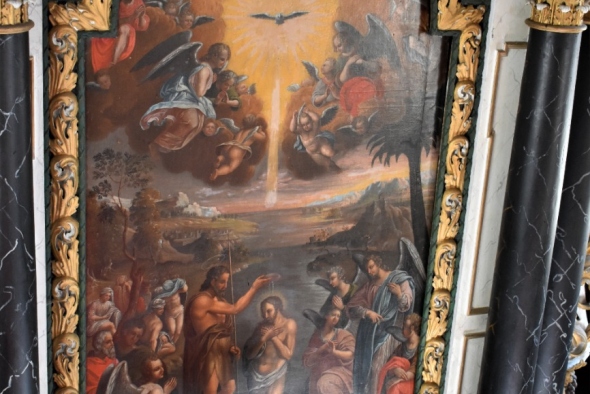
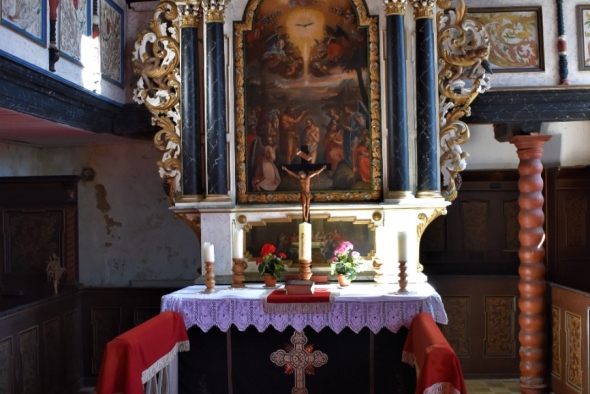
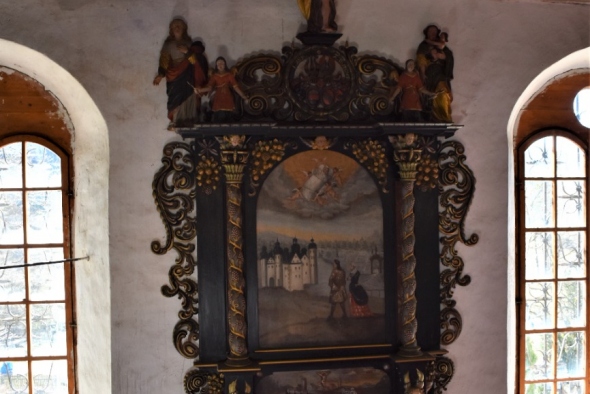
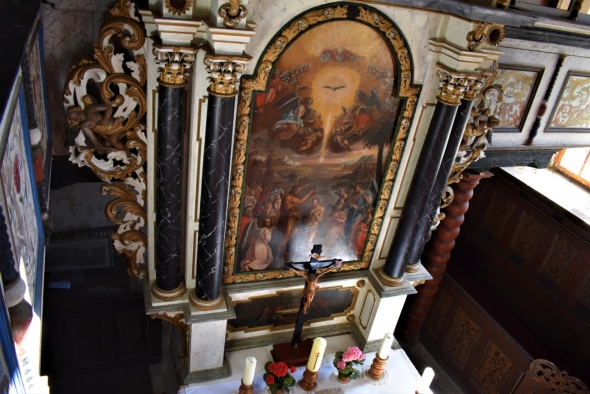
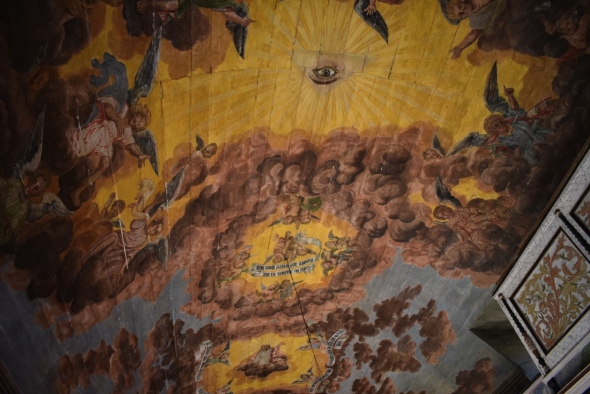
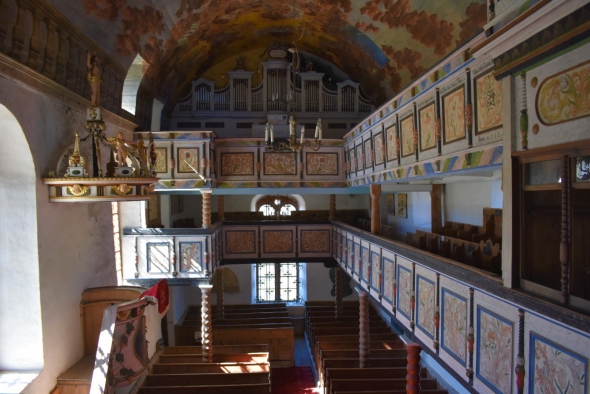
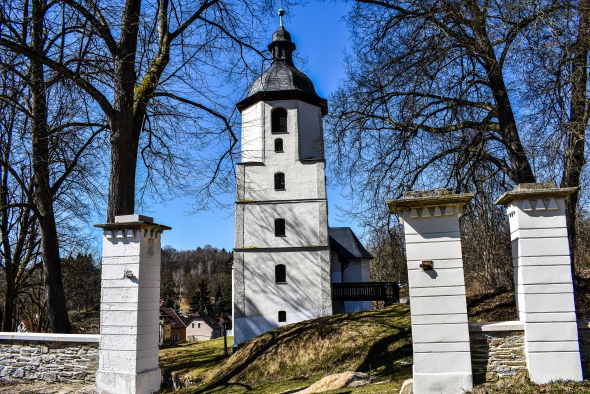
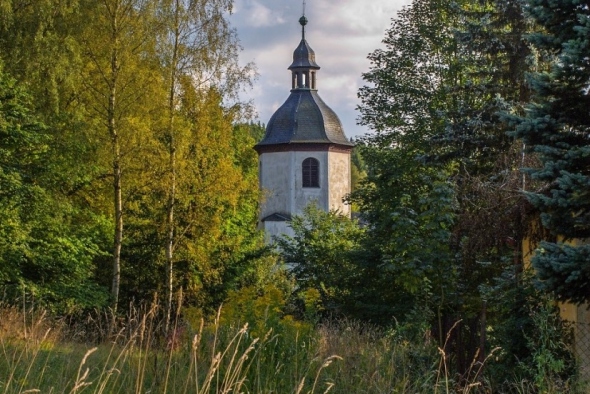
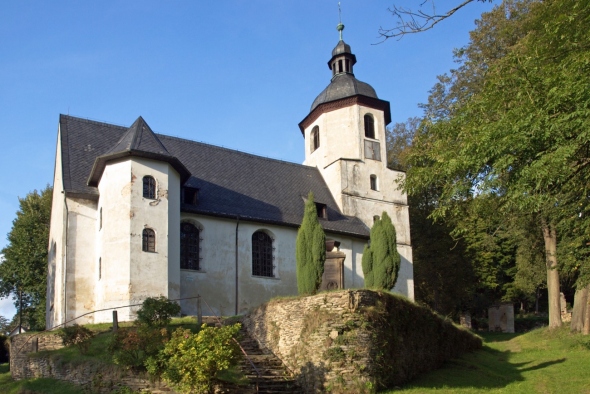
Traffic:
On foot, bike, car, bus
Distance from IC:
6,1 km
Opening hours:
Only by appointment at the info center
At this charming location, there once stood a church built by the noble Zedtwitz family between 1480 and 1490. However, later on, this nobility was compelled by the need to reconstruct the church in the Baroque style. The reason for this was not only the requirement for greater capacity to serve the growing Zedtwitz Podhradské estate, but also the desire to give the church a new and elegant appearance.
From the original structure, only the beautiful church tower was preserved. It has a square base but transforms into an octagonal structure in the upper levels. The crown of the tower is adorned with a picturesque onion dome that captures the eye.
Upon entering, you will encounter a rectangular nave with a high roof, and on both sides of the nave, there are small chapels that impart a unique atmosphere to the church. But that's not all - the church's interiors are entirely constructed from wood without a single nail. Instead, wooden pegs were used, which is a very unusual and historical construction method.
The entire interior is further adorned with beautiful angelic paintings created by the talented artist Rodius von Föslau in 1711. The altar and choir stalls from 1710 are also masterpieces - they were created by Jindřich Šimon Zietler from Doubrava.
One of the most interesting features in the church is the painting of the castle placed in a niche. It is believed that this painting represents the oldest surviving depiction of the now-vanished castle in Kopaniny.









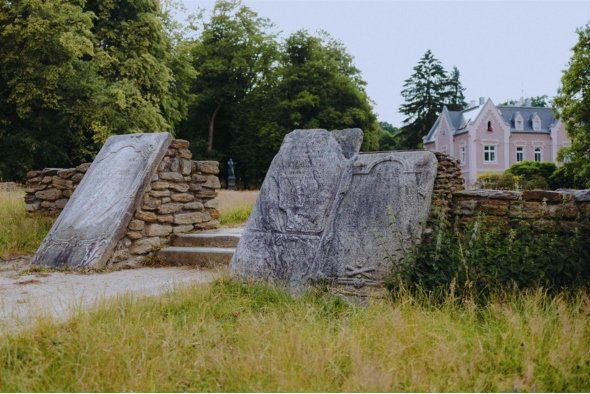
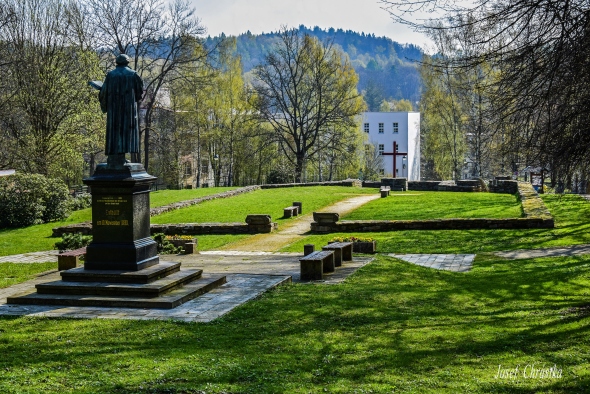
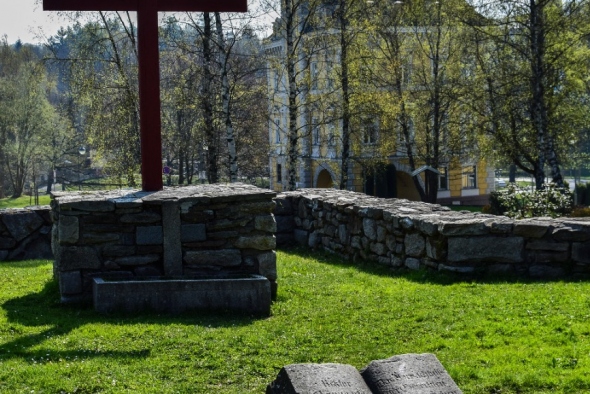
The former church of St. Trinity



Traffic:
On foot, bike, car
Distance from IC:
534 m
Opening hours:
No
The Story of the Church of the Holy Trinity in Aš: From a Wooden Chapel to a Tragic Loss
At this historic location in Aš, the story begins with a small wooden chapel. In 1370, a stone Gothic church dedicated to Saint Louis appeared here, marking the beginning of the remarkable history of this place.
In the 17th century, the original church of Saint Louis disappeared, but the stone tower remained, with mysterious traces of a possible military past.
In 1622, a new church was built in the Renaissance style. In 1682, its tower was enriched with an octagonal section and a picturesque onion dome.
In 1747, the church underwent an extensive reconstruction in the Baroque style and could accommodate up to 4,000 worshippers. The church gained its greatest fame in 1911 when impressive organs were acquired by the patron Gustav Geipel, which were among the largest in the region.
Unfortunately, tragedy struck in 1960 when the entire church, including the organs, was consumed by fire. This marked the loss of one of Aš's most precious treasures. Although the remnants of the church stood for several more decades, they were eventually demolished in 1987.
The church stood at a significant location in Aš, with its tower serving as a prominent landmark, and the cemetery around it was an important part of its history. While the church and its organs no longer exist, the memories of their former glory remain in the minds of the local residents.
Fire station
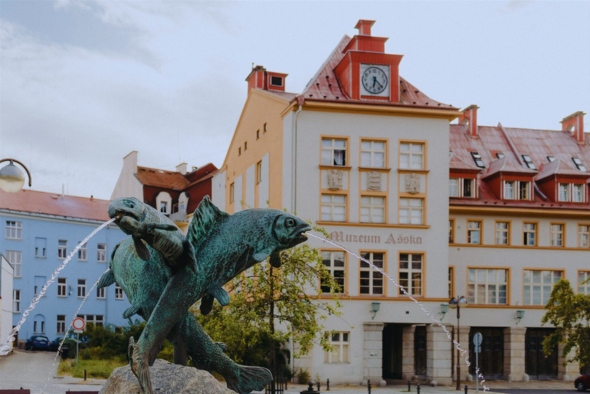
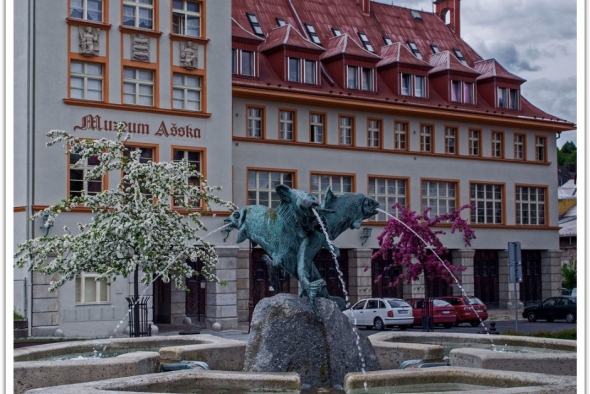
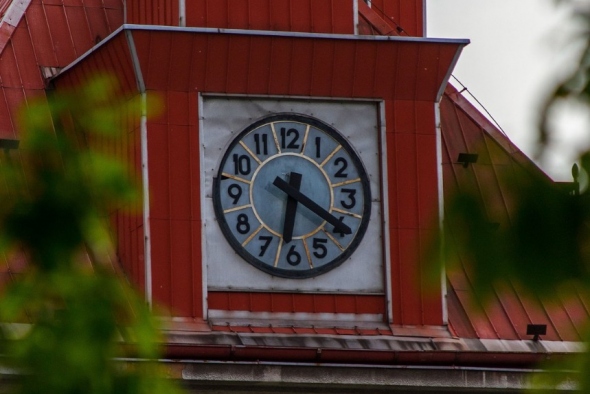
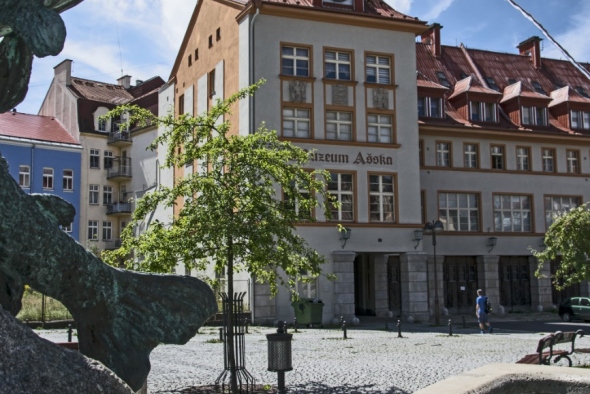
Traffic:
On foot, bike, car
Distance from IC:
320 m
Opening hours:
TUE-FRI 9:00-12:00 13:00-17:00 SAT-SUN 1.6-30.9 10:00-16:00 1.10-31.5 10:00-14:00
Welcome to a fascinating building with the number 635, which stands on the picturesque Post Square in Aš. This building has many interesting stories that date back to 1931 when it was completed and ceremoniously opened.
Originally, the building was designed for dual purposes. Architect Emil Rösler, who hailed from nearby Plauen in Saxony, designed the plans for this structure. On one side, it housed the municipal library, located on the second floor. This was the place where locals could discover countless books and magazines, attend lectures, and enjoy reading in the reading room.
On the other side, the building served as a center for the municipal volunteer firefighters and rescue workers. For them, there were garages, workshops, and rooms for equipment. Even accommodation spaces for firefighters were available, extending up to the third floor. A peculiarity was the tower for drying fire hoses, tastefully integrated into the building's architecture.
Later, after the Second World War, the building changed its purposes. The library moved out, and in its place, local firefighters settled. However, this phase also came to an end when the firefighters left the building in March 2006. Aš decided to use this beautiful building for its own needs, and today, you will find here an ethnographic exhibition of the Aš Museum.
This building is not only an architectural gem but also a witness to the changes in the town of Aš and its community. Its history is a moving story of transformations and new beginnings that span over more than eighty years. It is also worth mentioning that architect Emil Rösler, who designed this building, had a significant influence on the appearance of several towns on both the Czech and German sides of the border, adding an additional dimension to this interesting building.




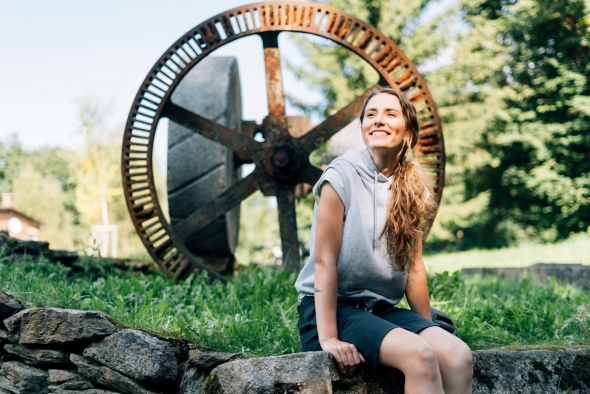
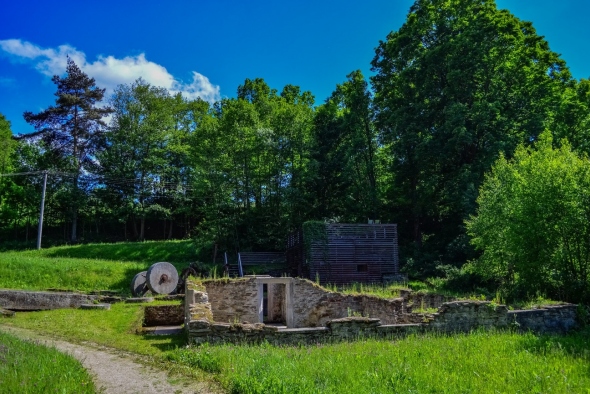
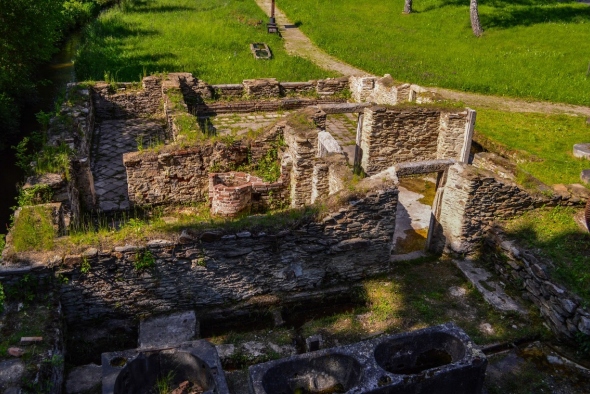
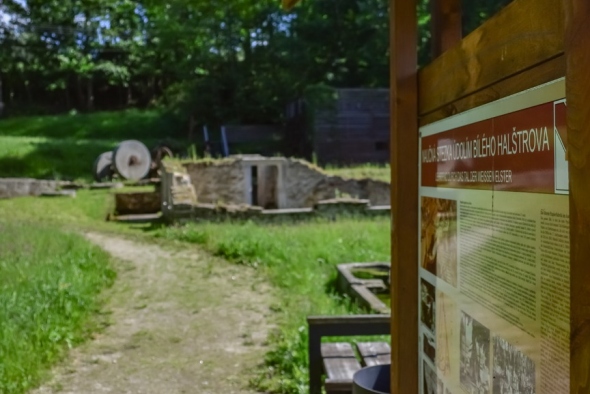
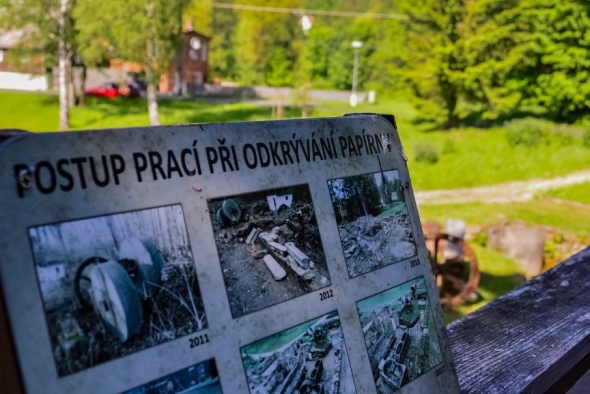
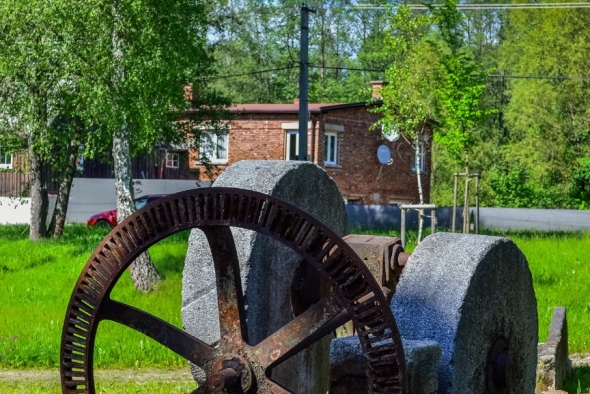
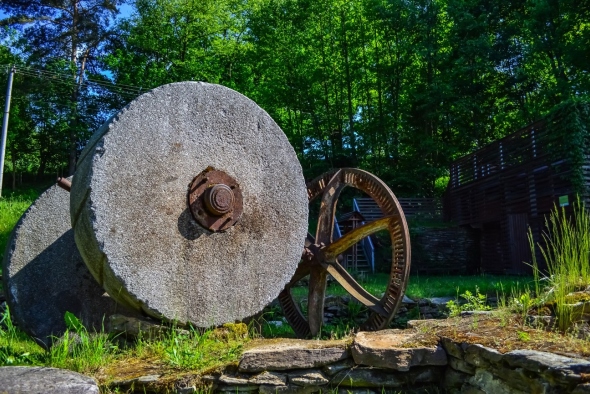
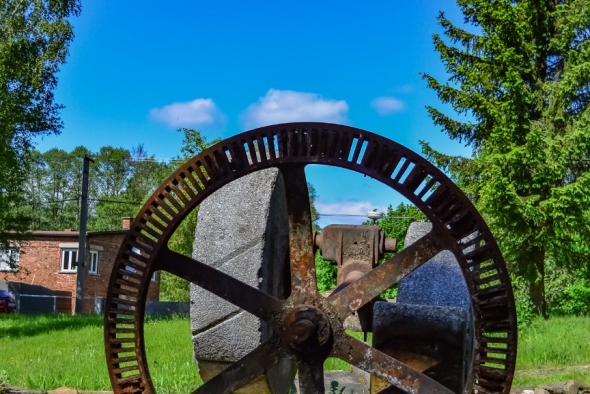
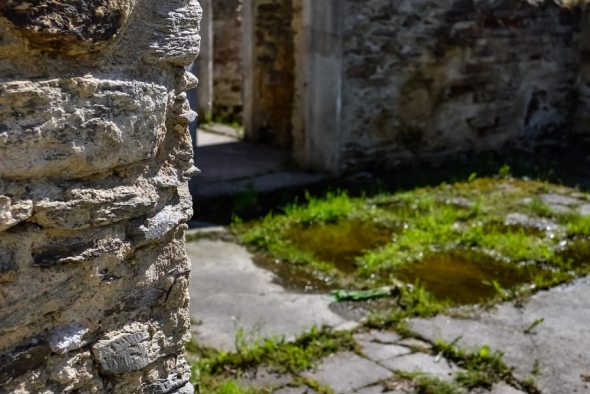
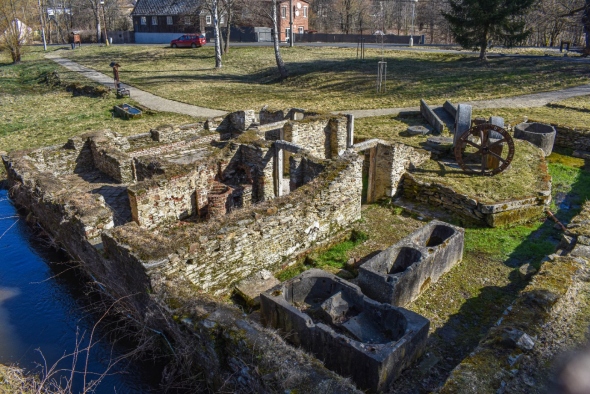
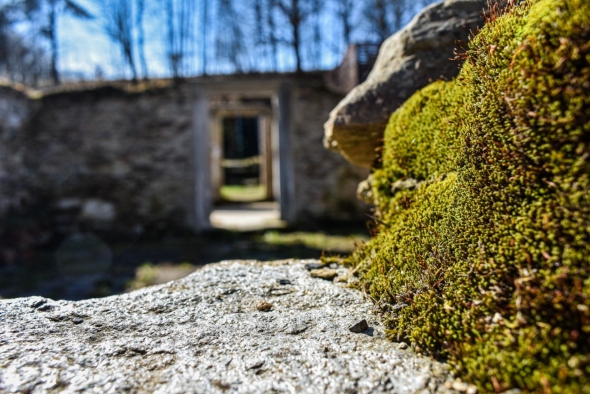
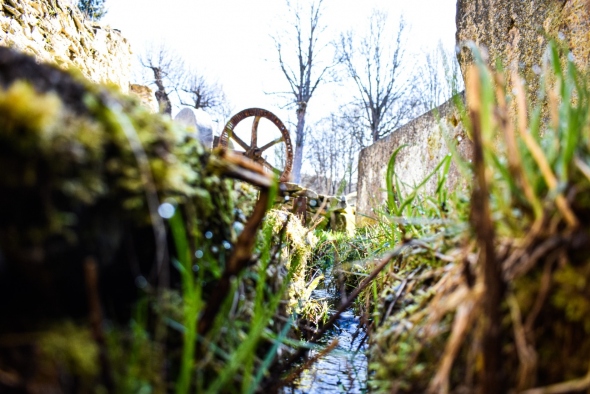
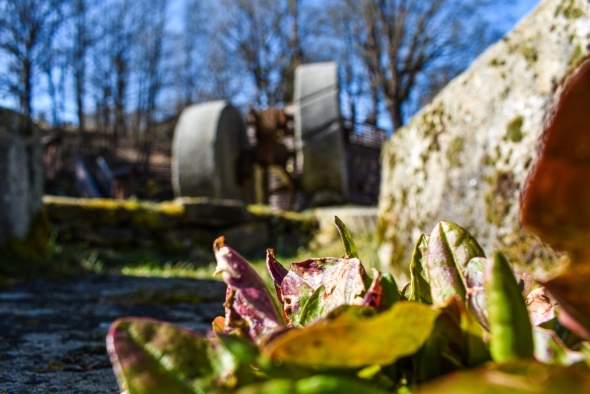
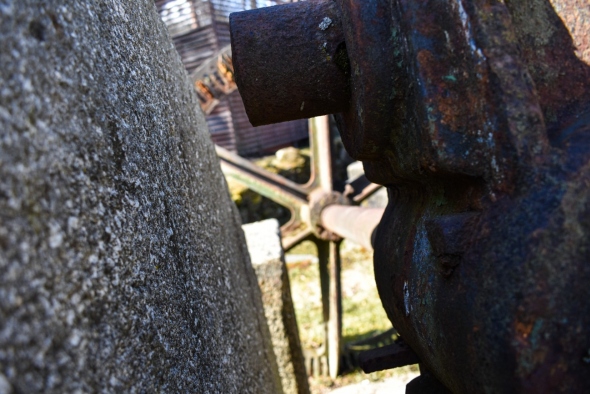
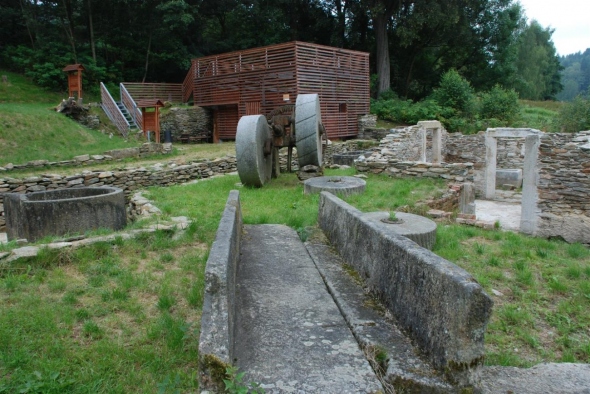
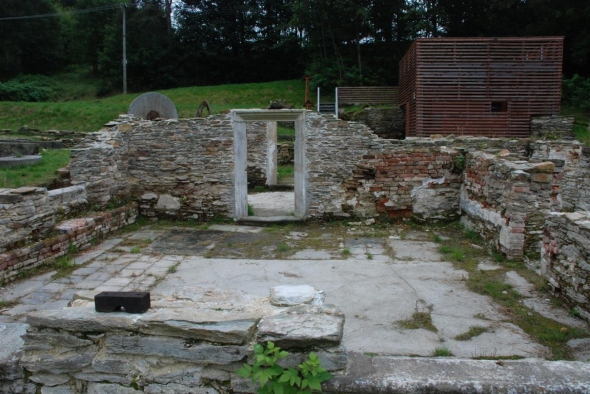
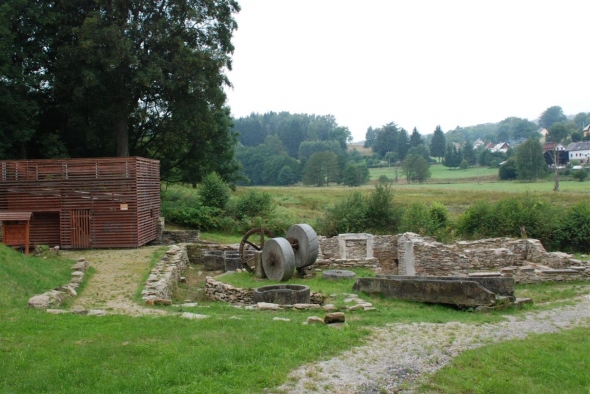
Paper mill Doubrava

















Length of the route:
8 km
Traffic:
On foot, bike, car, bus
Distance from IC:
8 km
Opening hours:
No
Welcome to the place where the history of paper unfolded as early as the 17th century! Paper from Aš was a real sensation for its time and traveled throughout Europe. This was particularly true in the 18th century when it experienced an unprecedented boom. Local paper mills used an advanced machine called the "Hollander," originally developed in the Netherlands. However, after the mid-19th century, paper production gradually began to decline, and it completely disappeared in Doubrava after World War II.
The year 2012 brought an interesting transformation thanks to the efforts of the Aš City Hall and local residents. The walls and foundations of the original paper mill, long hidden under overgrowth, were once again revealed. This revelation allowed for the preservation of not only the walls and foundations but also some historical tools, such as troughs, grinding stones, vats, basins, and the Hollander itself. You can explore and admire all of this as a passing visitor. Additionally, the site has been enriched with a wooden observation terrace and informative panels. As part of these improvements, the nearby hydroelectric power plant was also restored.
Memorial of Dr. Martin Luther
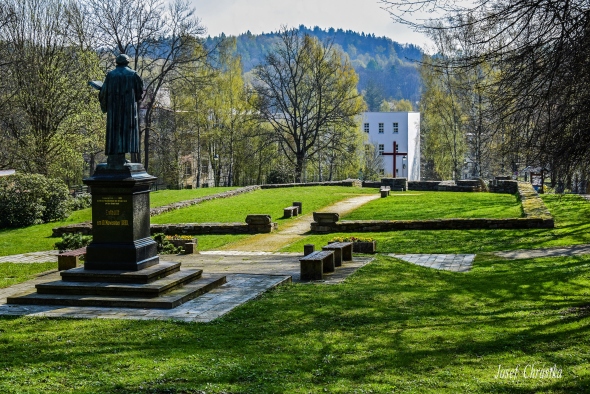
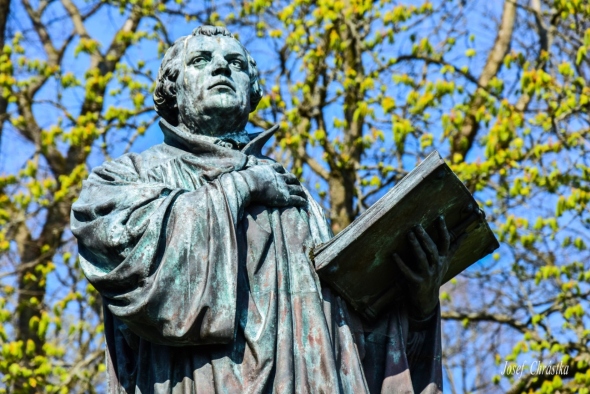
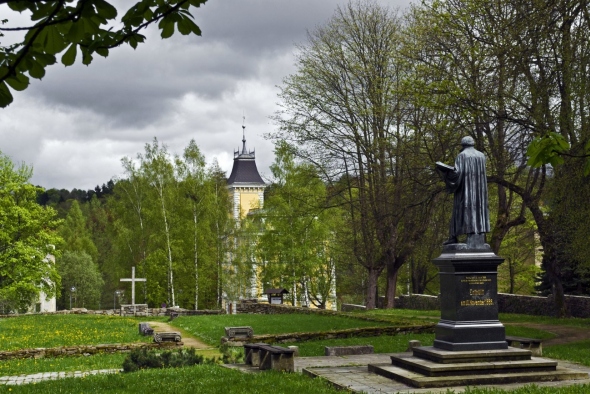
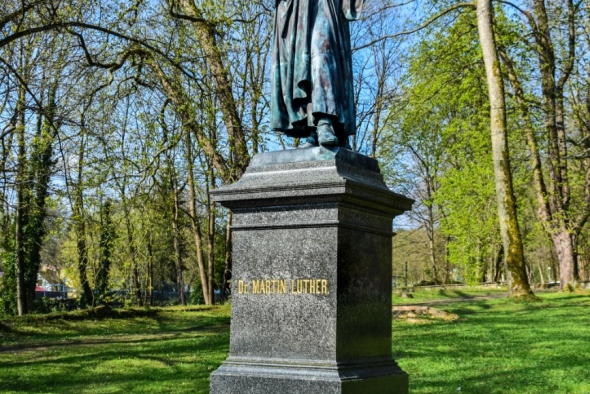
Traffic:
On foot, bike, car
Distance from IC:
563 m
Opening hours:
No
Welcome to Aš, a town that offers you many unique and fascinating historical landmarks. Among them is the incredible Monument to Dr. Martin Luther, which is the only one of its kind in the entire country.
This captivating monument, unveiled in 1883, celebrates the birth of one of the most significant figures in history, Martin Luther. On the 400th anniversary of his birth, this impressive sculpture was created by the master sculptor J. Rössner from Nuremberg. It is a work of art that not only honors the important reformer but also captivates us with its exquisite artistic quality.
The statue, reaching a height of two meters, was cast in an art foundry in Nuremberg itself, adding another layer of historical and artistic significance to this masterpiece. Furthermore, the pedestal on which the statue stands was crafted in the neighboring town of Selb, providing this monument with even more authenticity and uniqueness.
Come and explore this captivating piece of historical treasure that will remind you of the significant role of Martin Luther in world history. You will undoubtedly be amazed by the beauty and importance of this place, which has become an integral part of Czech history and culture. Don't forget to bring your camera to share this precious experience with others and immerse yourself in history and art at every step.




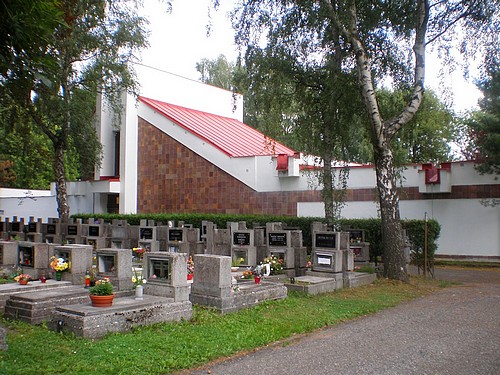
City cemetery

Traffic:
On foot, bike, car, public transport
Distance from IC:
1,9 km
Opening hours:
April-September: 8:00-19:00 October-March: 8:00-17:00
This historic cemetery is a unique place with a rich history and several interesting landmarks that are worth a visit. The cemetery, whose history dates back to the previous century, is an important part of the local heritage. Most of the local chapels were demolished in the 1990s, but in their place, a beautiful and poignant funeral chapel was built, serving families in their final farewells to loved ones.
For history enthusiasts, there is an interesting monument on this cemetery dedicated to the Prussian-Austrian War of 1866. This monument reminds us of events from the time when significant events collided here.
World War II left its mark everywhere, and the Municipal Cemetery in Aš is no exception. Here, you will find a monument dedicated to the victims of this tragic era, reminding us of the importance of peace and reconciliation.
One of the most fascinating sculptures on this cemetery is "Nature" from 1985, a work by the artist Jaroslav Bocker. This sculpture invites us to contemplate the connection between nature and human existence, a theme that has always fascinated people and artists.
The Municipal Cemetery in Aš is not only a place where the deceased are honored but also a place that prompts us to reflect on history, nature, and human creation. If you are in the vicinity, don't forget to visit this unique location that has much to offer.
Stone bridge
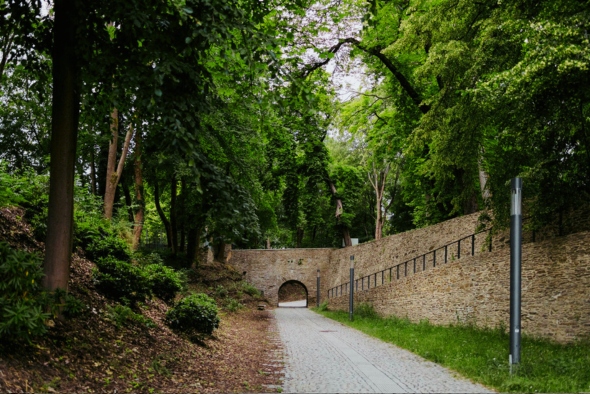
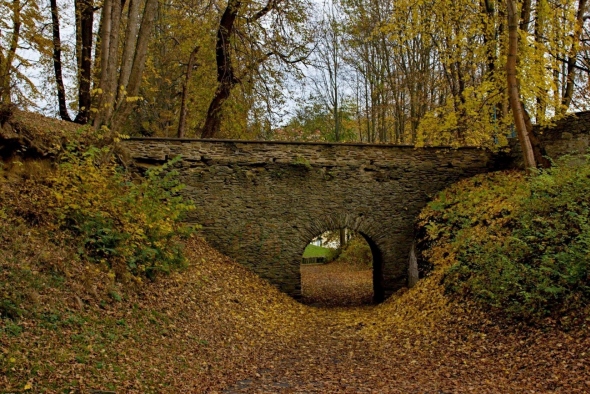
Traffic:
On foot, bike, car
Distance from IC:
561 m
Opening hours:
No
Welcome to the fascinating world of history and architecture! The bridge standing before you was completed in the remarkable year of 1724. What's even more amazing is that in 2024, it will celebrate its venerable 300th birthday!
This picturesque bridge, which connects two exceptional locations, was originally designed to span the gap between the old and new evangelical cemeteries. Unfortunately, when the evangelical church burned down in 1960 and was subsequently demolished, the bridge ceased to serve its original purpose. Today, you can find it just a stone's throw away from the Luther monument.
Constructed with love and care, the bridge was made using quarry slate. Its beautiful arch has a span of 3.25 meters and reaches a height of 3.2 meters, while the overall height of the bridge (including the upper railing) is six and a half meters. The bridge deck itself is 3.5 meters wide, providing ample space for a romantic stroll with a breathtaking view of the surrounding landscape.
This bridge is a magnificent example of historical architecture and is so valuable that it has been a protected monument since 1987. Don't forget to take a souvenir photo to remind you of the beauty and rich history of this enchanting place.


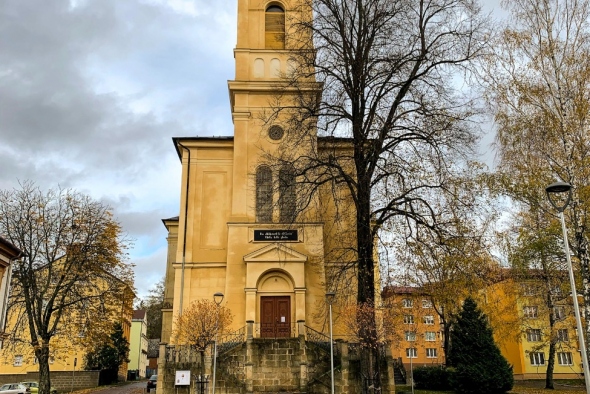
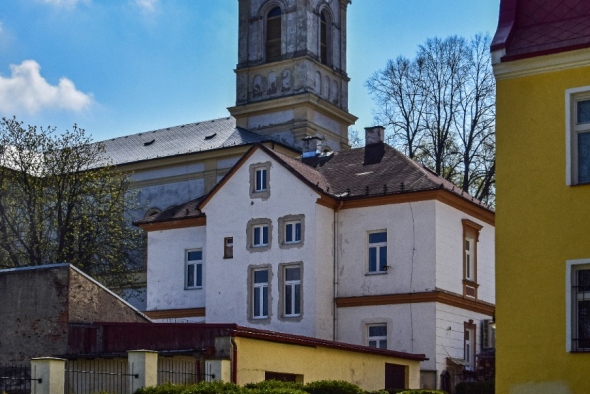
Church of St. Nicholas


Traffic:
On foot, bike, car
Distance from IC:
338 m
This beautiful Roman Catholic structure was built more than a century ago and offers visitors a fascinating window into the past of this elegant town of Aš.
The Church of St. Nicholas proudly stands above the town, and its history is as impressive as its appearance. It was built between 1867 and 1871 under the craftsmanship of Aš's builder, Karel Weidemann. This single-naved building with a transept and a 48-meter high western tower literally emerges from history and will undoubtedly captivate you with its beauty.
One of the most interesting features of the Church of St. Nicholas is the memorial plaque from the original structure, which is embedded in the north wall. This plaque is a kind of historical window that takes us back to the late Baroque church of 1780 that stood on this site. It's like traveling through time when you touch this relic from the past during the church's visit.
What's more, the Church of St. Nicholas is not just about architecture and history. Its western tower offers you a breathtaking view of the entire town of Aš and the surrounding landscape. So, if you're ready for a little climb, the reward will be a panoramic view that you'll remember for a lifetime.
For tourists and lovers of beauty, history, and spiritual heritage, the Church of St. Nicholas in Aš is an essential part of your visit to this town. Come and explore this magnificent building and immerse yourself in its rich heritage.
Salva Guardia
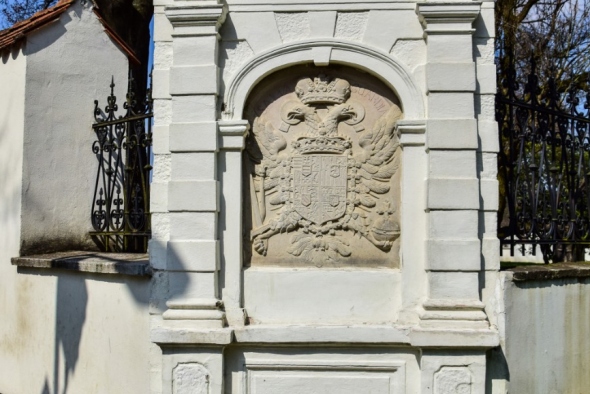
Traffic:
On foot, bike, car
Distance from IC:
269 m
Opening hours:
No
In Mikulášská Street, you can discover a magnificent stone relief known as "Salva Guardia." The relief symbolizes the liberation of the city from the obligation to quarter troops and is situated in a beautiful pseudo-baroque niche, surrounded by an edicule, at the corner of the garden of a mansion that now serves as a textile museum.
This captivating work was created by an unknown artist in 1724, and it was at that time that Anton Josef Zedtwitz obtained the right to place it on the gate of Zedtwitz Castle. This made it a symbol of the city's liberation from the duty to quarter military units. After a fire at the castle, the relief was removed, and in 1836, it was placed on the gate of the old Catholic church. With the subsequent construction of a new church, it was relocated once again, eventually finding its current location in 1892.
The relief itself is of Baroque origin and depicts a crowned double-headed Imperial eagle. The eagle carries the Imperial shield on its chest and holds the Imperial scepter and orb in its talons. The plaque is carved from sandstone and has a rectangular shape with a segmental arch at the top. Above the eagle's head, you will find the inscription "Salva Guardia," which means "military protection." This beautiful relief holds significant historical and cultural importance and is listed as a cultural monument, making it a fascinating place for tourists who wish to explore the rich history of this region.

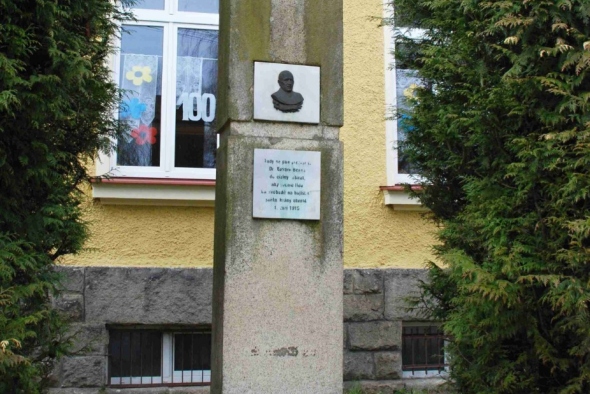
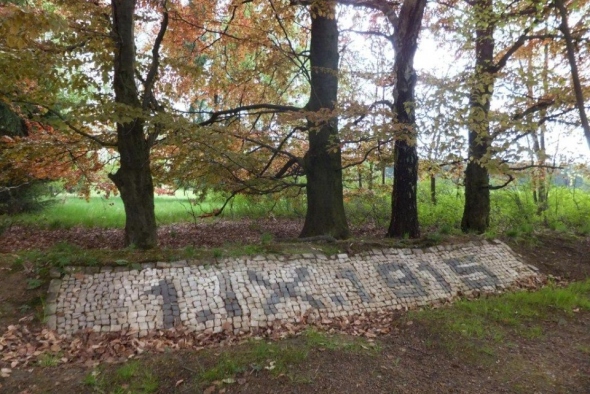
Beneš's stickleback


Traffic:
On foot, bike
Admission:
No
Distance from IC:
5,3 km
Duration:
1:35 h
Opening hours:
No
Benešův palouček is located on the outskirts of the city, right at the state border, near the border bollard 17/15. The place where Dr. Edvard Beneš illegally crossed the state border on September 1, 1915 during his dramatic escape from the c. And k. Monarchy under prof. Masaryk to Switzerland. The place where the history of independent Czechoslovakia began to take shape is today perfectly hidden from the sight of a casual observer. It is shrouded in wildlife, which prevailed in this border zone after 1951, at a time when the border was being wired by the communist regime. Why did Beneš start planning an escape from the monarchy at the age of 31? The reason is simple. He was threatened with arrest every day for his illegal activities in the domestic resistance organization Maffie. Several of his co-workers have already been caught by the police. Now it was his turn. The death penalty for high treason hung in the air. He visited Aš at the end of August 1915. Where he met his classmate and teammate from Prague's Slavia, Dr. Amerling. At that time, he stayed in Aš as a doctor in a military infirmary, located in the building of the Aš grammar school (now Okružní primary school and kindergarten), only about a kilometer away from the Bavarian border.
Word got out and the trip was planned down to the smallest detail. Dr. Amerling, an army and army officer, was known to occasionally go to nearby Bavarian black beer pubs. He knew the path well, as did the movement of the Bavarian and Austrian border guards. On the first day of September, Dr. Beneš to Aš again. At noon on September 1, Dr. in a walking uniform goes out. Amerling dirt road towards the Bavarian border. He is followed by an inconspicuous man with a hat, hand luggage, backpack and fake passport - Edvard Beneš. Dr. Amerling holds a book in his hand, and if it hits the Bavarian patrol, he opens it behind his back. This is a signal for Beneš to hide. The nearest Bavarian railway station in Schönwald is a few kilometers away via forest roads. A Bavarian gendarme suddenly appears on the road, Beneš disappears in the undergrowth. Dr. Amerling lures the gendarme away, when he later returns to the meeting place, he no longer finds Beneš. In time, he received a ticket from Beneš that he had safely got to Hof by train, and from there via Munich to Geneva, Switzerland. In the spring of 1947, a commemorative still life was created on this site. A small coat of arms made of crushed stone, surrounded on three sides by a clay rampart, at the head of which a memorable date was drawn from a black and white mosaic. 1915
Villa Gustav Geipel
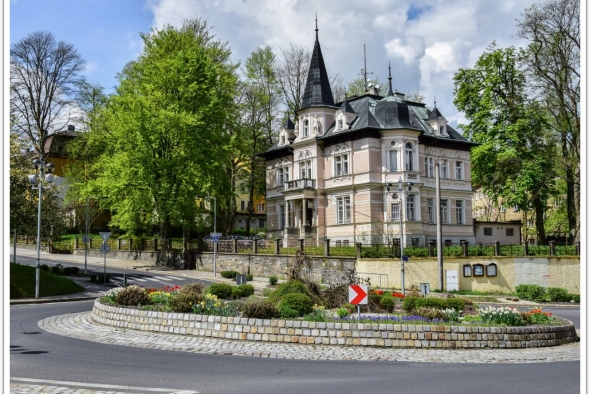
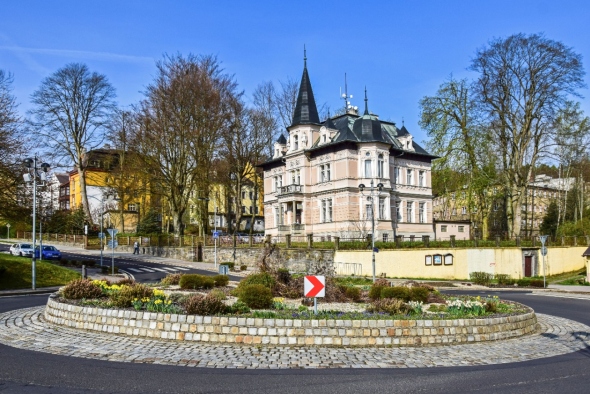
Traffic:
On foot, bike
Distance from IC:
190 m
Opening hours:
No
The villa was built in 1888 according to the plan of the Köhler & Pscher company, it was built by Gustav Geipel - the factory owner and patron of Aš. After his death, it was bought by the Fischer factory family.


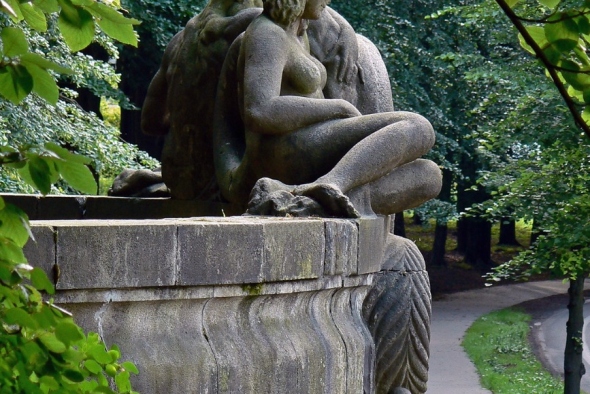
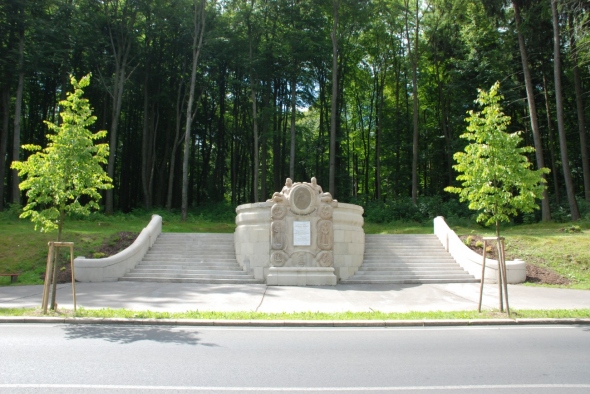
Monument to Gustav Geipel


Traffic:
On foot, bicycle, public transport
Distance from IC:
1,1 km
Opening hours:
No
The monument was built in 1924, its author is Johannes Watzal. The monument is dedicated to the burgher of Aš and benefactor Gustav Geipel. In 2014, it was reconstructed to its original form, including a relief by Gustav Geipel.
Monument to Theodor Körner
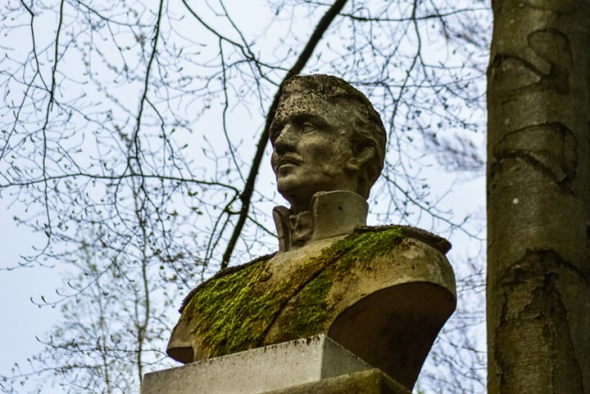
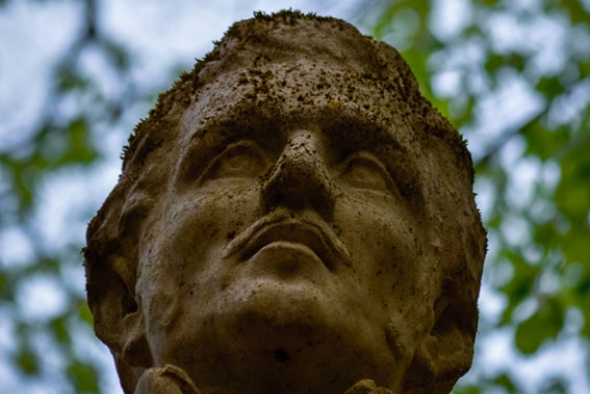
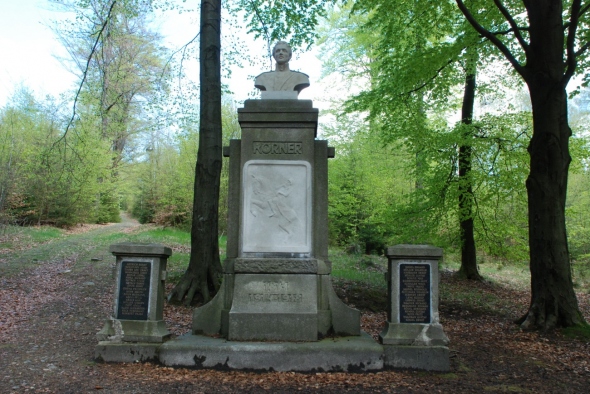
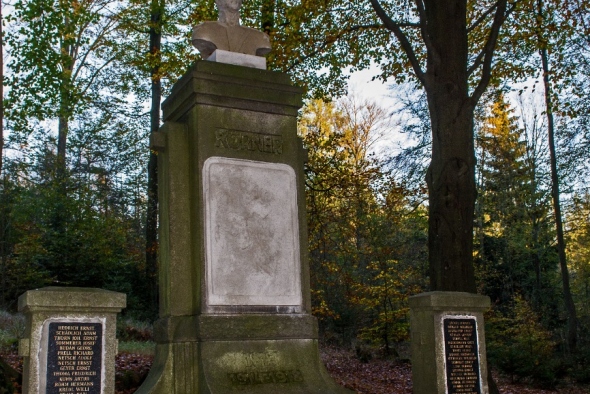
Traffic:
On foot, bike
Distance from IC:
1,6 km
Opening hours:
No
The monument was unveiled in 1913 on the 100th anniversary of the death of T. Körner (* 1791 † 1813). In September 2013, SUPŠ created a new bust of T. Körner in Český Krumlov. Körner was an important German poet and soldier.




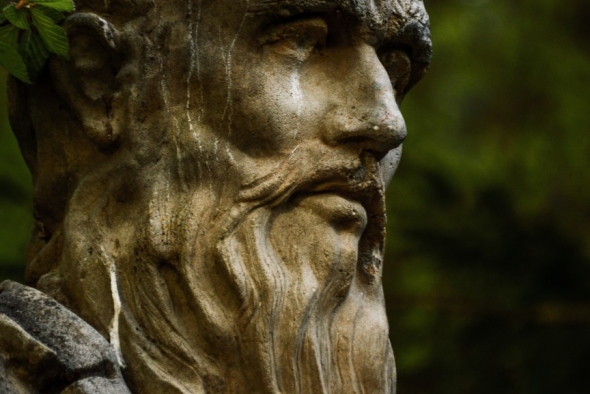
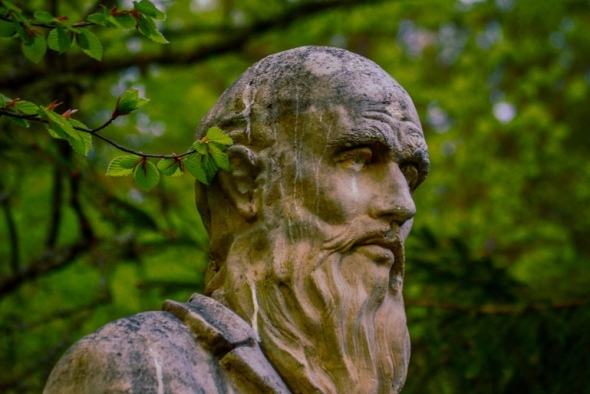
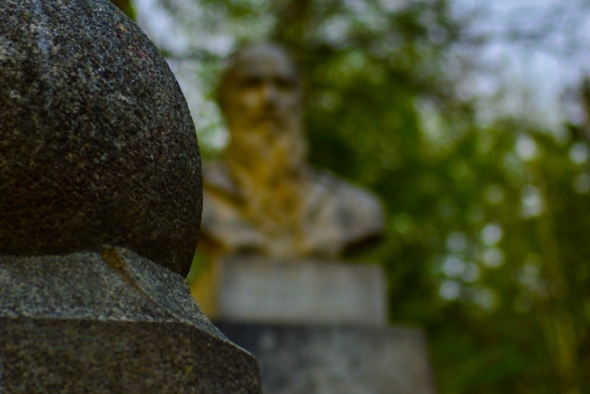
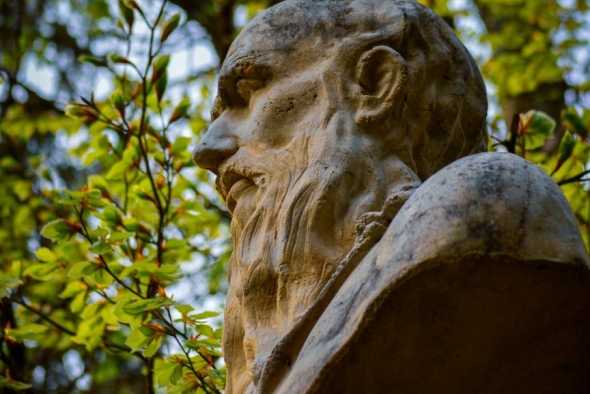
Monument to Friedrich Ludwig Jahn




Traffic:
On foot, bike
Distance from IC:
1,4 km
Opening hours:
No
The monument was unveiled in 1909 on the occasion of the 60th anniversary of the existence of the Aš Physical Education Association. F. L. Jahn (* 1778 † 1852) was the founder of the physical education unit and in Germany he was called the father of gymnastics. In September 2013, SUPŠ created a new bust of F. L. Jahn in Český Krumlov.
Monument to Friedrich Schiller
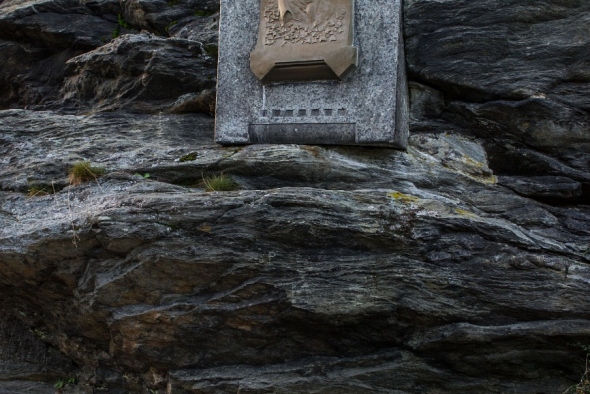
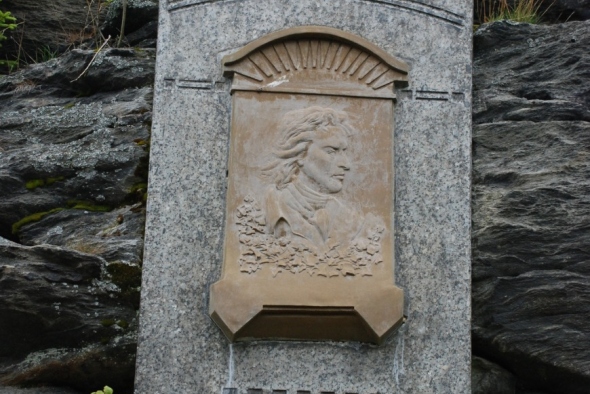
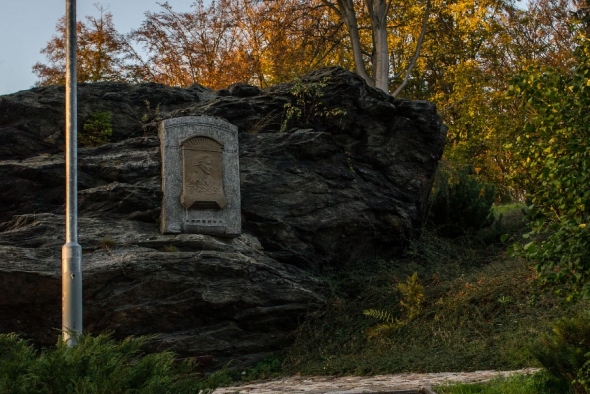
Traffic:
On foot, bike
Distance from IC:
1,8 km
Opening hours:
No
The monument is dedicated to the famous German poet and friend J. W. Goethe. The memorial was unveiled in 1905. It consists of a memorial plaque and a relief with the face of F. Schiller. The monument was restored in 2014.



This website is using cookies
We Inform you that this site uses cookies. You can find more detailed information about cookies and the processing of personal data in the Privacy Policy and the use of so-called cookies. We hereby ask you for your consent to the use of these cookies.